Mississippi River Flight - Day Four - Part Two
Creve Ceour Airport - Historic Aircraft Restoration Museum
|
|
While at Creve Coeur Airport, it is mandatory to visit the on-field Historic Aircraft Restoration Museum. One of the attendants at the FBO will take you through the four big hangars for ten bucks. Many of the aircraft are airworthy. This is one of the largest collections of flying classic aircraft in America. Most of these airplanes you will not see anywhere else.
I visited this museum back in 2011 on my Santa Fe Trail flight. On that visit I only had a zoom lens for my Digital Rebel camera which was worthless for taking pictures of airplanes inside a large hangar! So I have almost no pictures of the museum from that trip. On this trip I was ready! Actually, instead of the Digital Rebel, I just used my iPhone, which probably takes better pictures inside than the Digital Rebel (only because I don't know how to take advantage of the Digital Rebel's capabilities).
Overhead is a replica of the first Waco, the Waco Cootie. A single-seater, only one was built.
At bottom right, is a Waco of unknown type.
WACO (referring to the aircraft) is usually pronounced "wah-co" (the first syllable pronounced as in "water"), not "way-co" like Waco, Texas, whose name is entirely unrelated.
This museums has a lot of Wah-cos.
|
| |
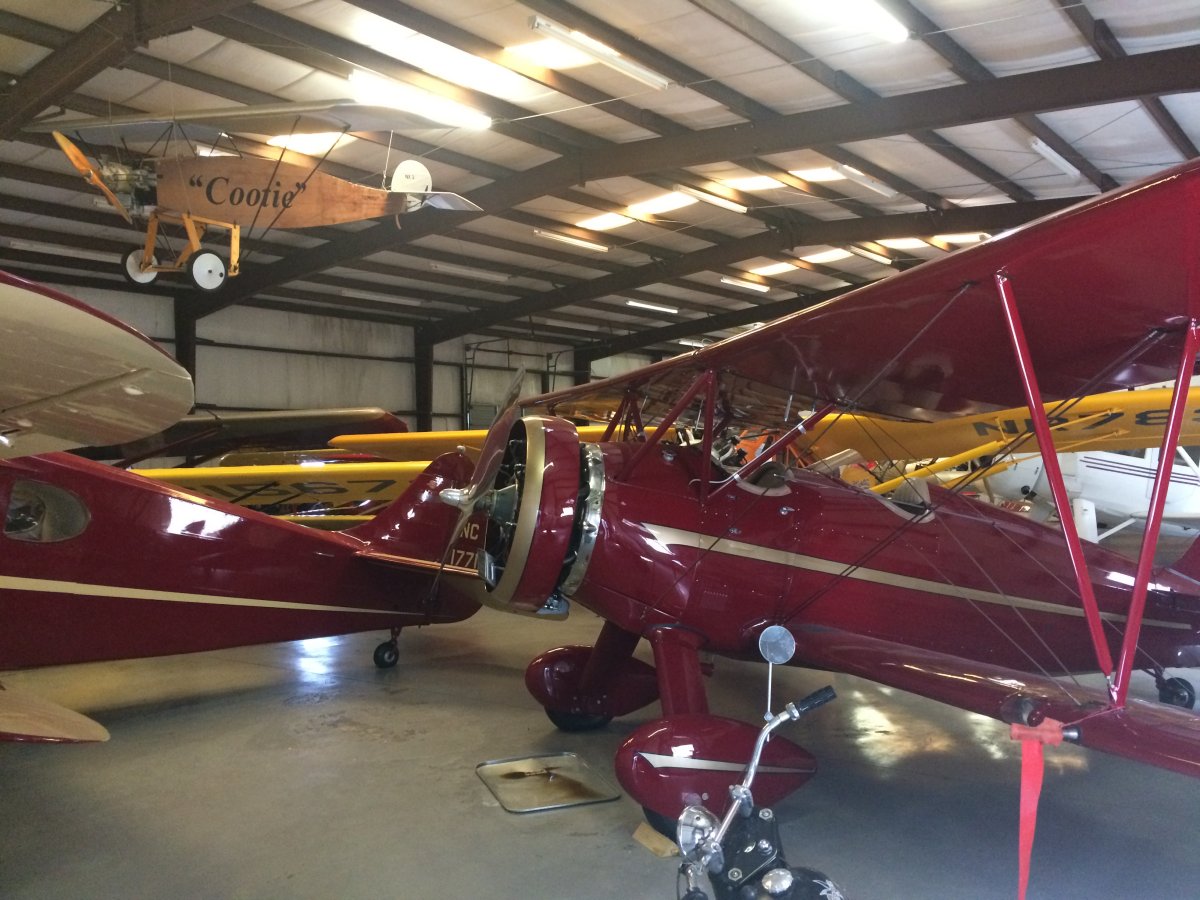 |
|
| A Zenith Z-6A -- a single engine biplane U.S. airliner built in the late 1920s. One of only five built, this Zenith Z-6A biplane is the only survivor. It was rebuilt to flying condition and flown in 2004. The paint scheme is of Bennett Air Transport of Boise, Idaho. This airliner cruised at a blistering 110 mph. |
| |
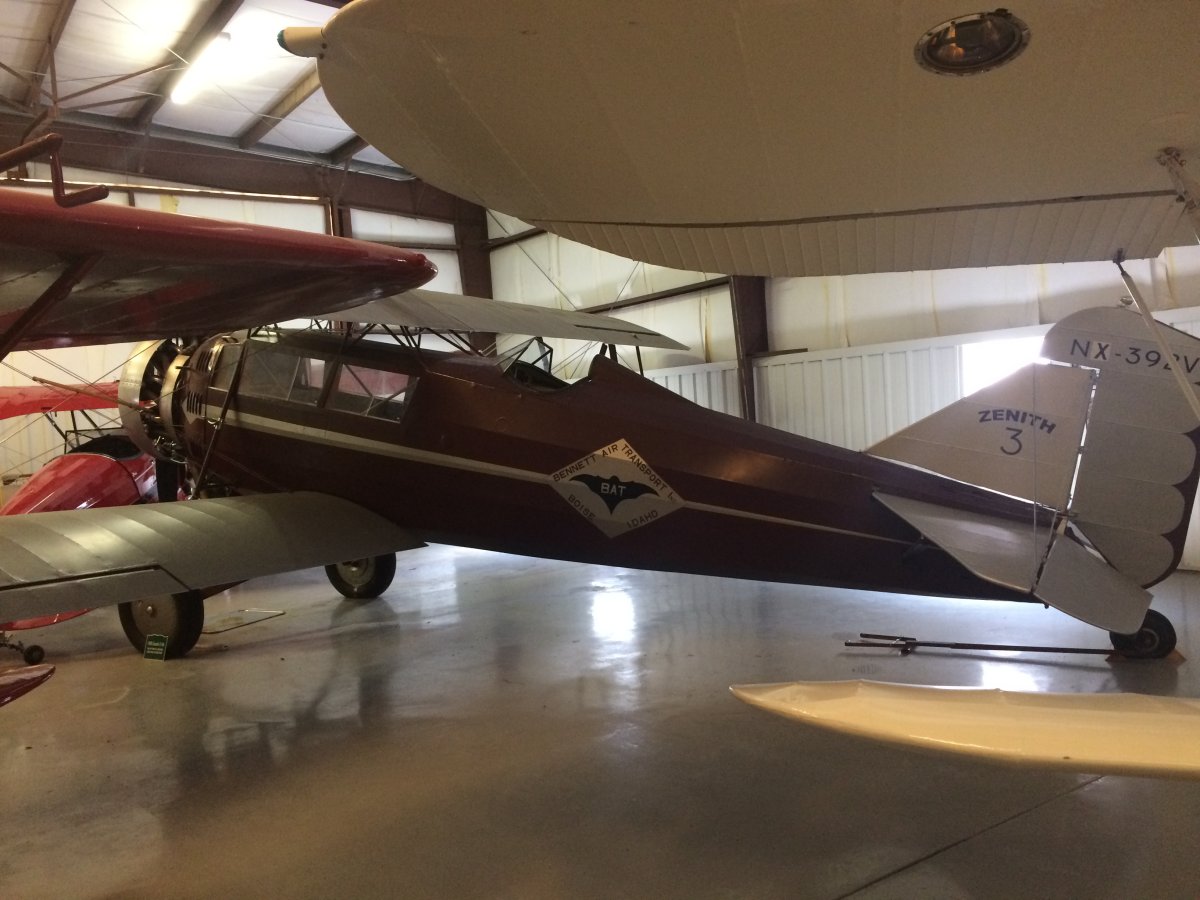 |
|
| Front end of the Zenith Z6 |
| |
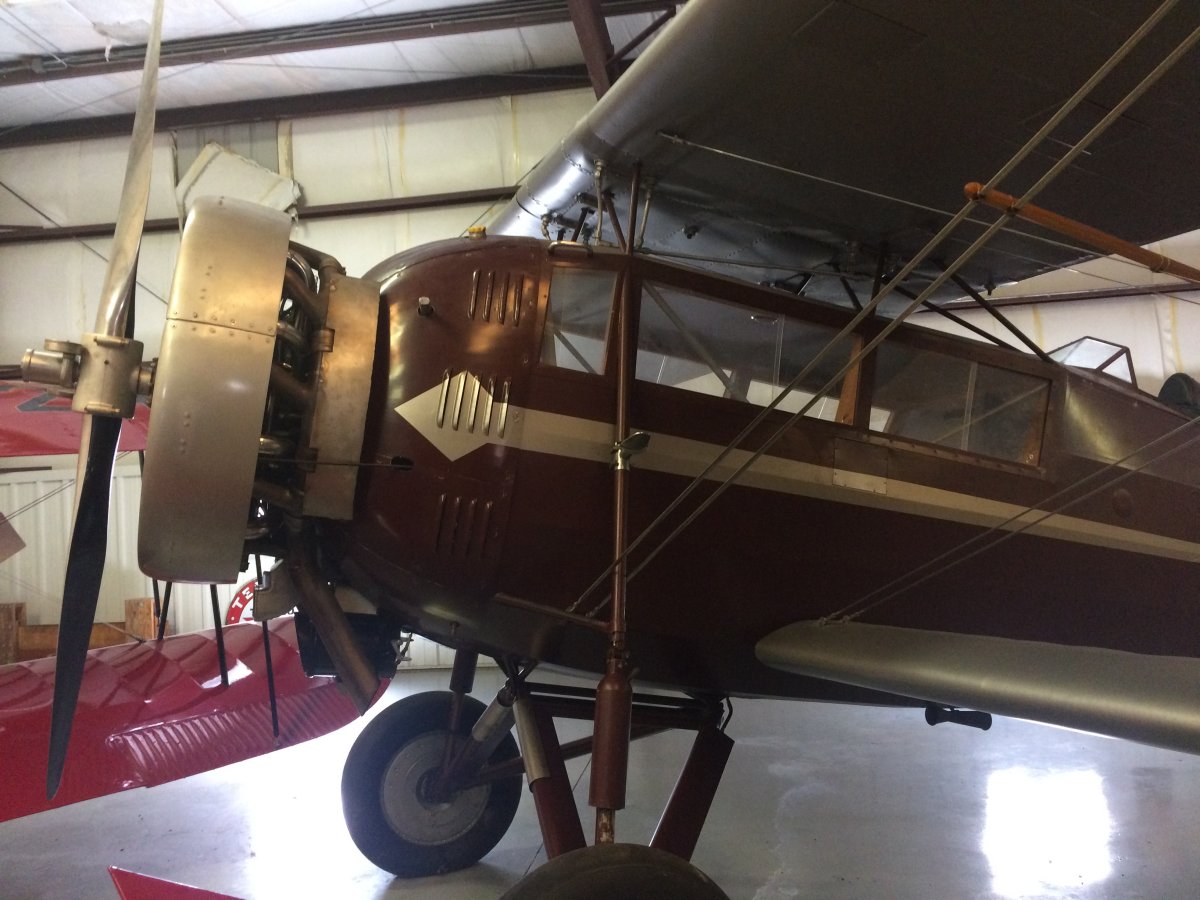 |
|
Everyplane in this museum is a taildragger. Except this one. It's a 1938 Waco AVN-8 with a tricycle landing gear. Slower than the conventionally geared Wacos, it was ahead of its time. But eventually tricycle landing gear would take over. |
| |
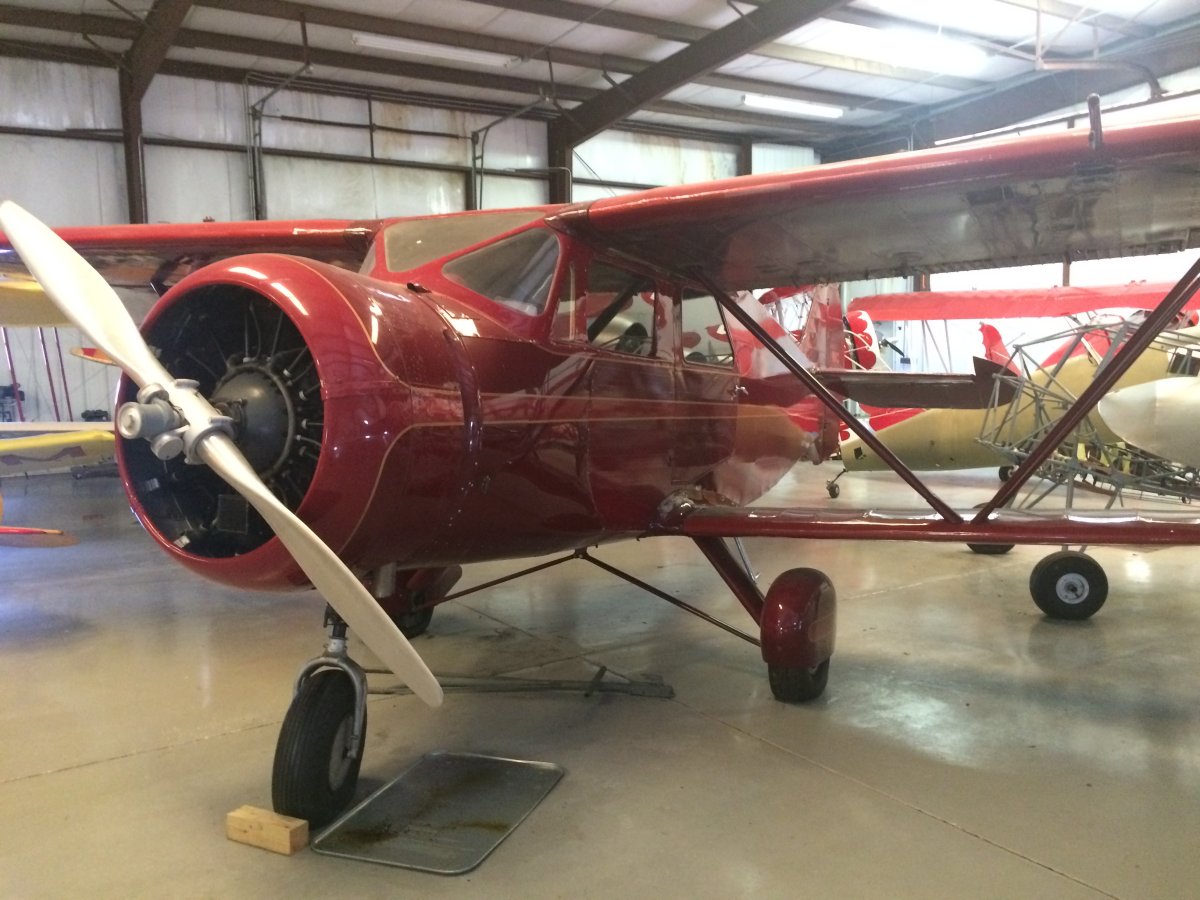 |
|
|
A Waco Standard Series Cabin; specifically a 1934 Waco YKC.
The Waco Standard Cabin series is a range of American single-engine 4–5 seat fabric covered cabin biplanes produced by the Waco Aircraft Company beginning in 1931 with the QDC and continuing until 1942 when production ended for the VKS-7F.
|
| |
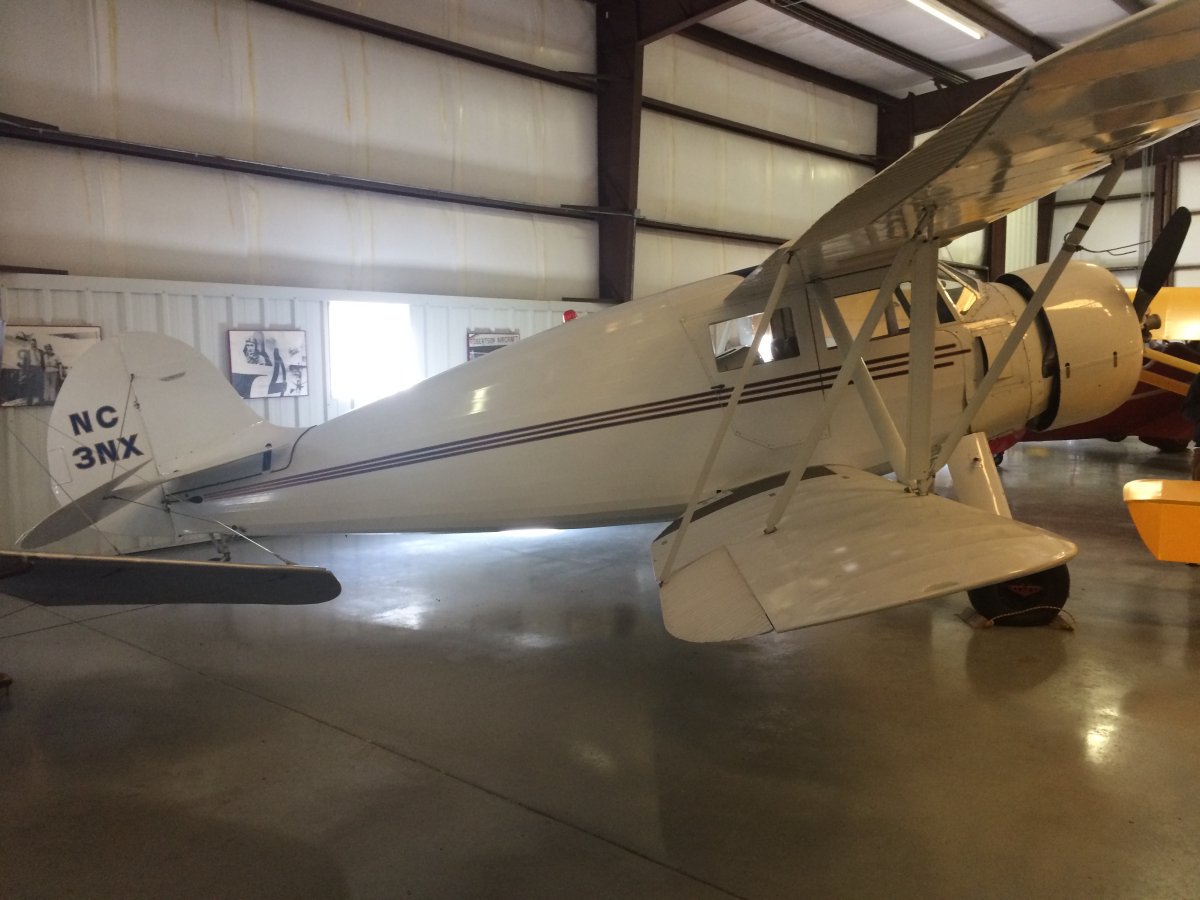 |
|
| A Waco Model F: specifically, a ZPF-6. It has a straight wing. |
| |
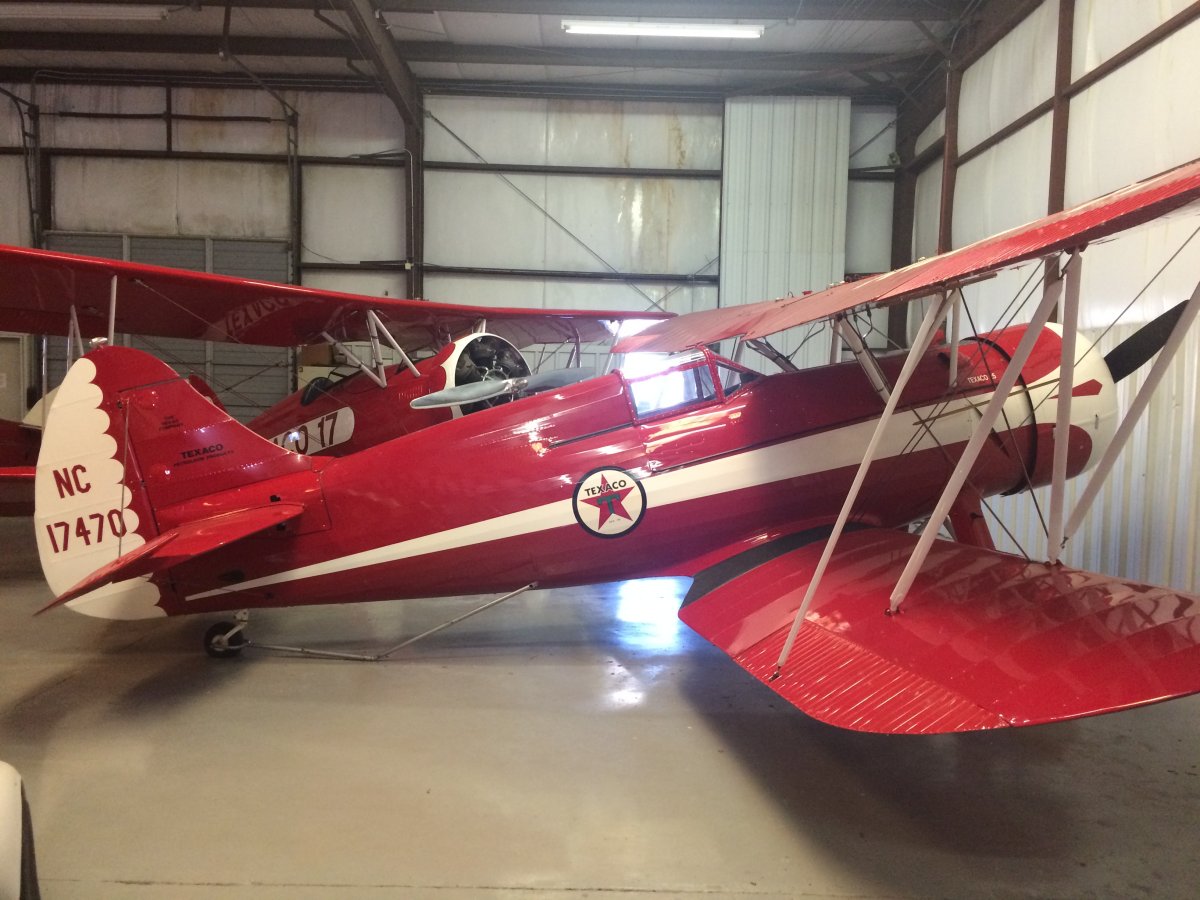 |
|
|
Another Waco Model F series. This one is a UBF-2.
|
| |
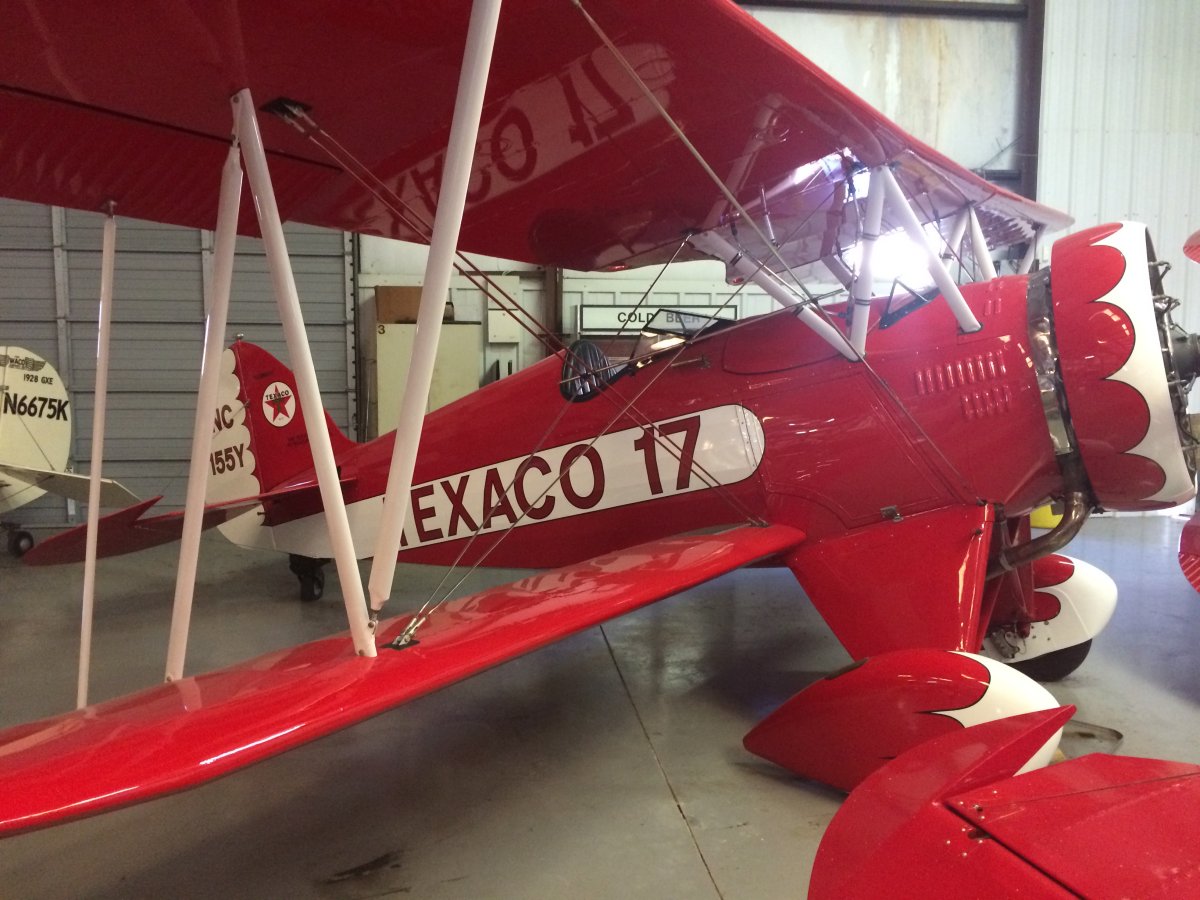 |
|
| This is the earlist Waco in the collection: a 1928 Waco 10 (or GXE). With an OX-5 engine, it could carry three people at 80 mph. |
| |
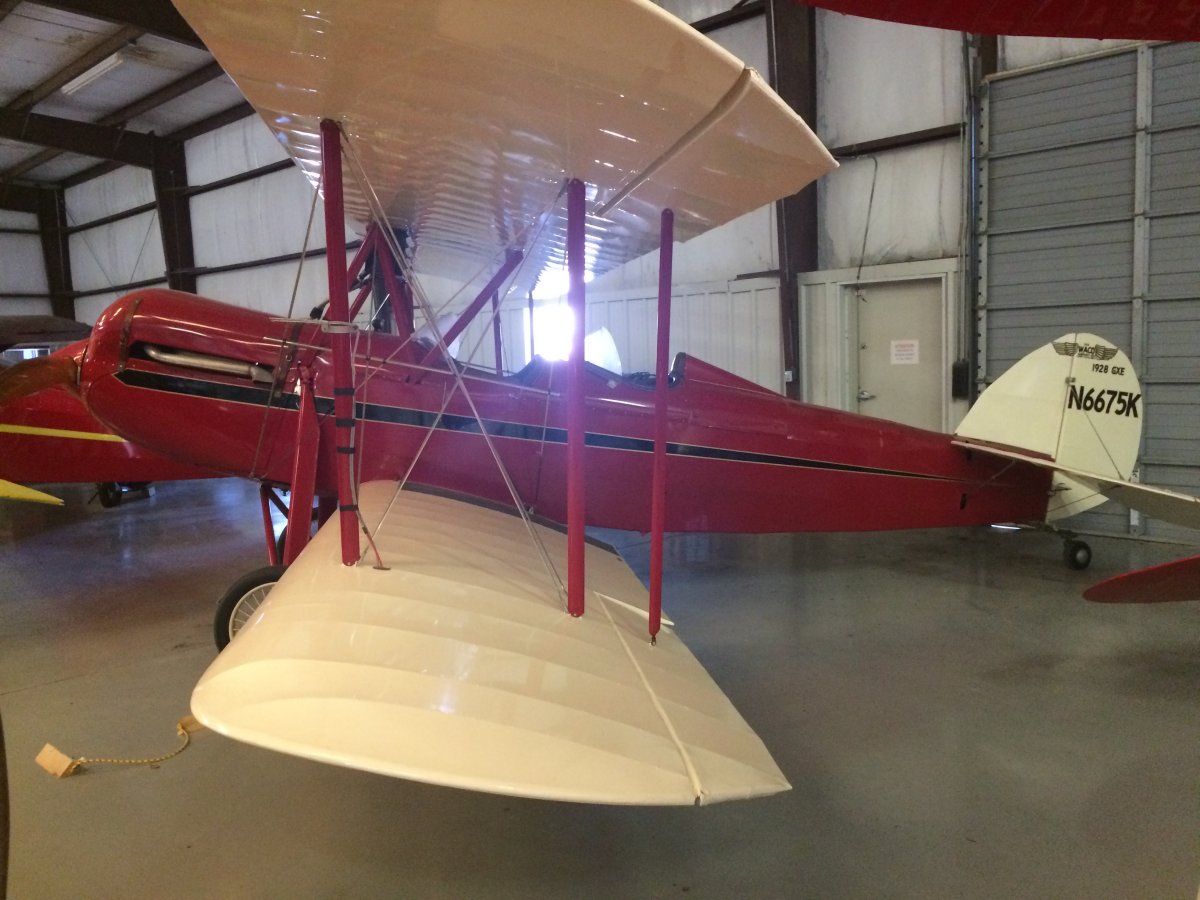 |
|
A Stinson Junior (SM-8A): a high-winged American monoplane of the late 1920s, built for private owners, and was one of the first such designs to feature a fully enclosed cabin. 321 were built between 1928 and 1933. |
| |
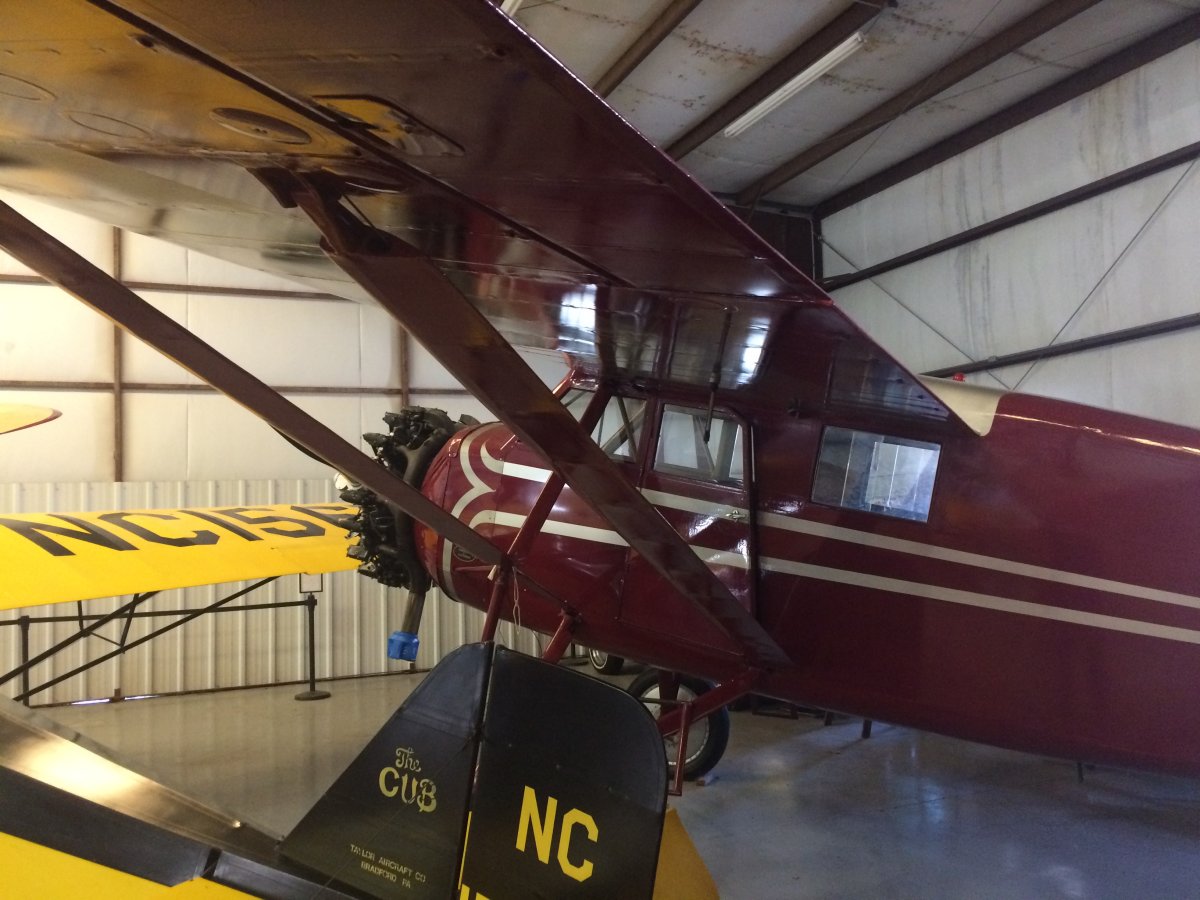 |
|
| Tail section of the big Stinson SM-8A |
| |
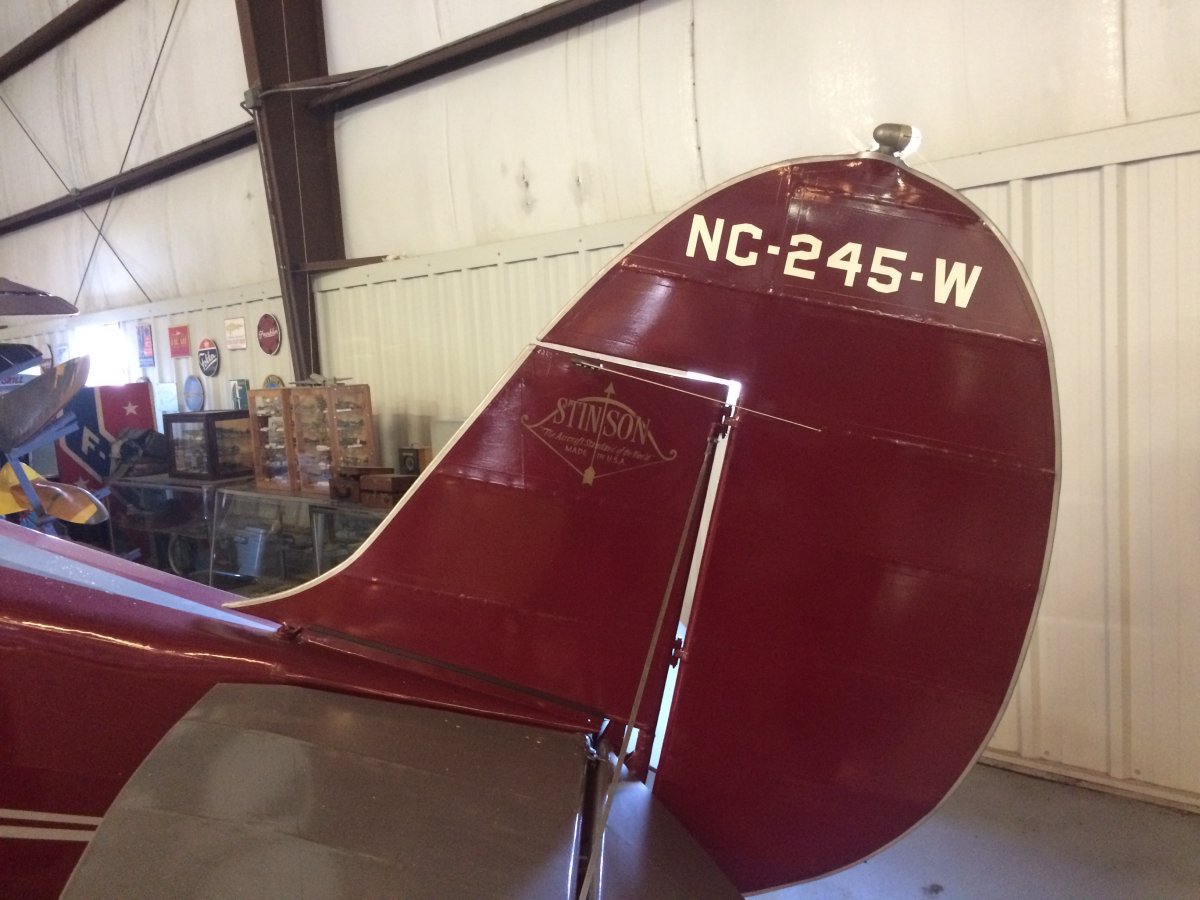 |
|
| This is a St. Louis Cardinal, made by the St. Louis Aircraft Manufacturing company. This aircraft is the only remaining Cardinal left out of 28 total built in 1928. It is powered by a 5 cylinder Kinner K5 (100 horsepower) and has a 125 mph top speed. |
| |
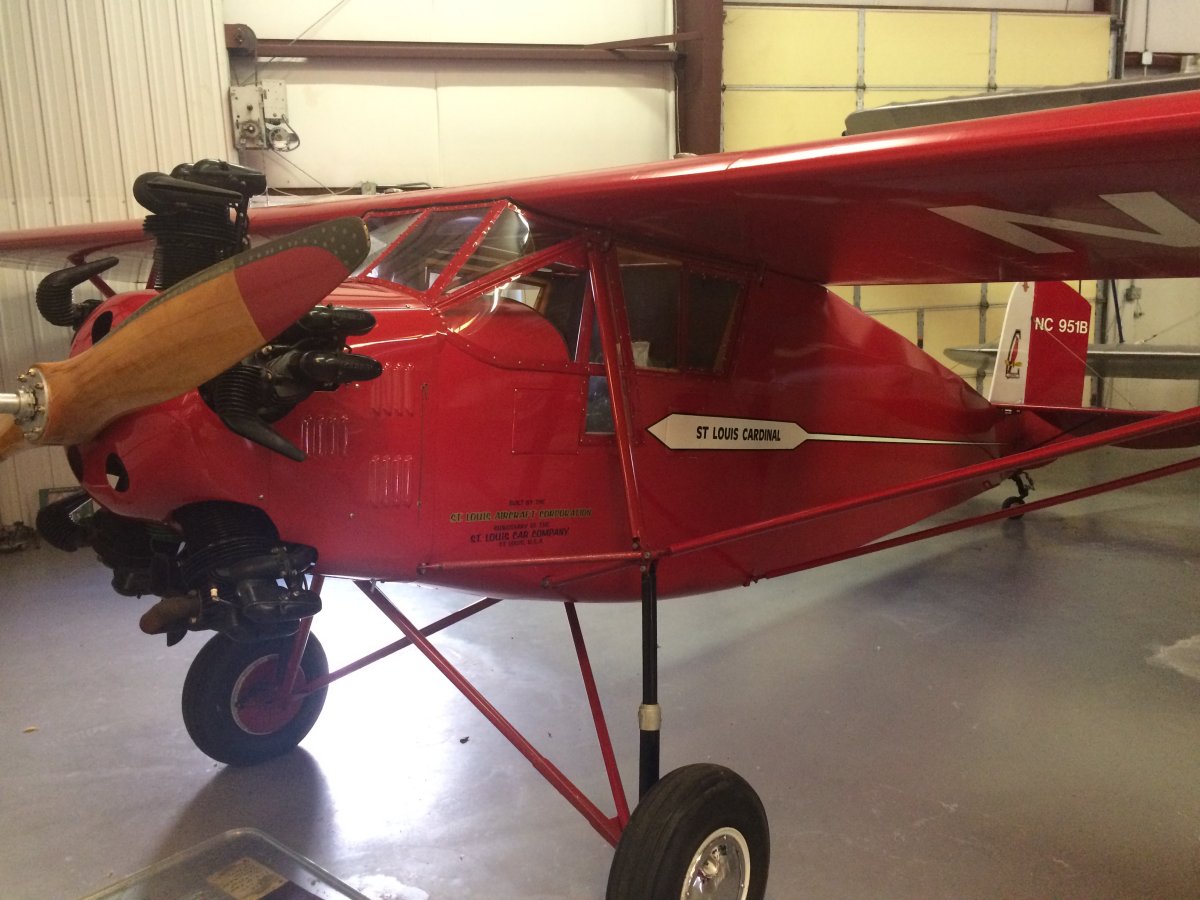 |
|
| A replica of a Curtiss-Wright CW-1 Junior. The original CW-1 had a 40 horsepower three-cylinder Szekely SR-3 radial engine bit it was unreliable -- it had a bad habit of throwing its cylinders, never a good thing but especially bad in a pusher configuration! They put an 85hp Continental engine in this replica, since it was intended to be flown. |
| |
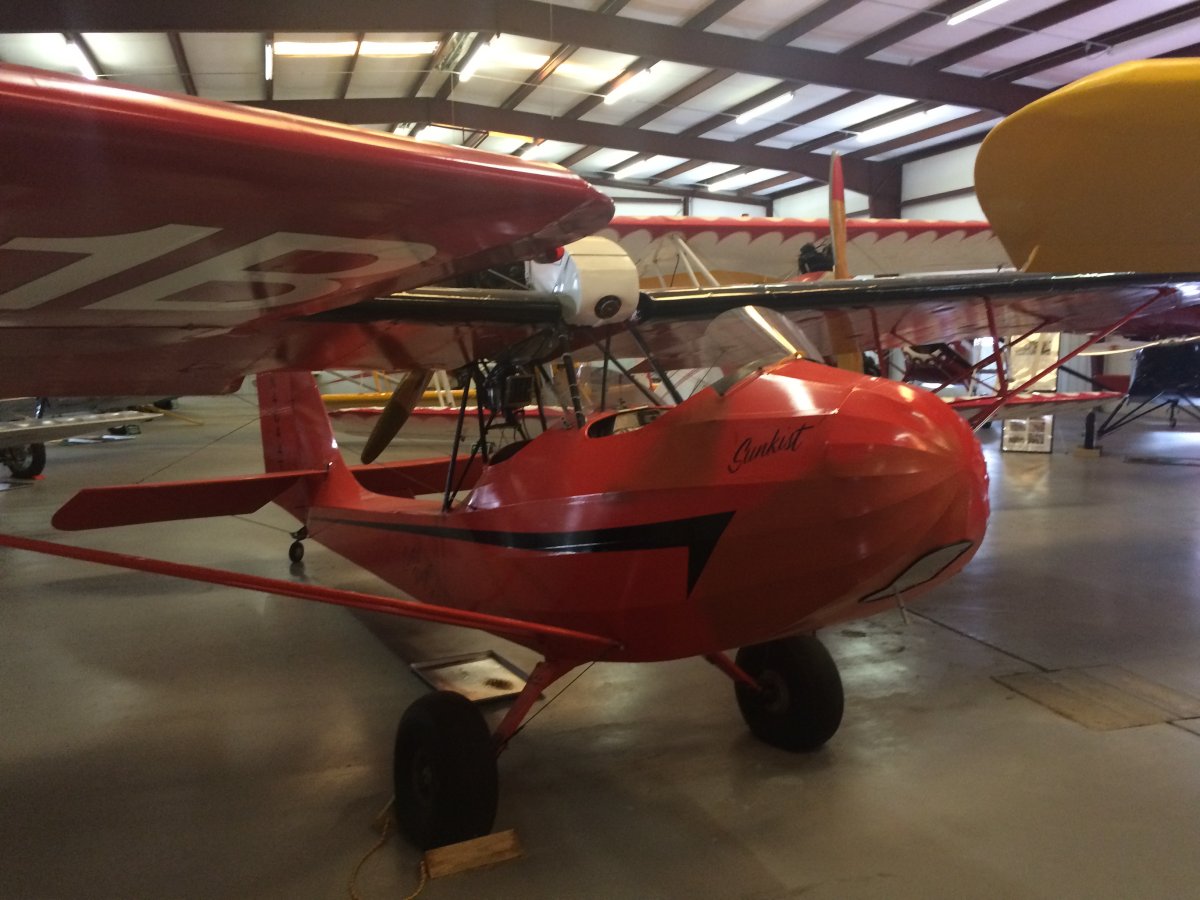 |
|
The Curtiss Robin, introduced in 1928, was a high-wing monoplane built by the Curtiss-Robertson Airplane Manufacturing Company. It had three seats. This is probably a Robin Type B modified with a Lycoming radial.
This Curtiss Robin was restored as the record-setting "The Greater St. Louis" during a record endurance flight 13-30 July 1929, at St. Louis, Missouri, flown by Dale Jackson and Forest O'Brine. They flew for an amazing 17 days, 12 hours, 17 minutes! That's 647 hours, more than the average current day general aviation pilot probably flies in six years.
769 were built. There are quite a few of them in aviation museums across the U.S.
|
| |
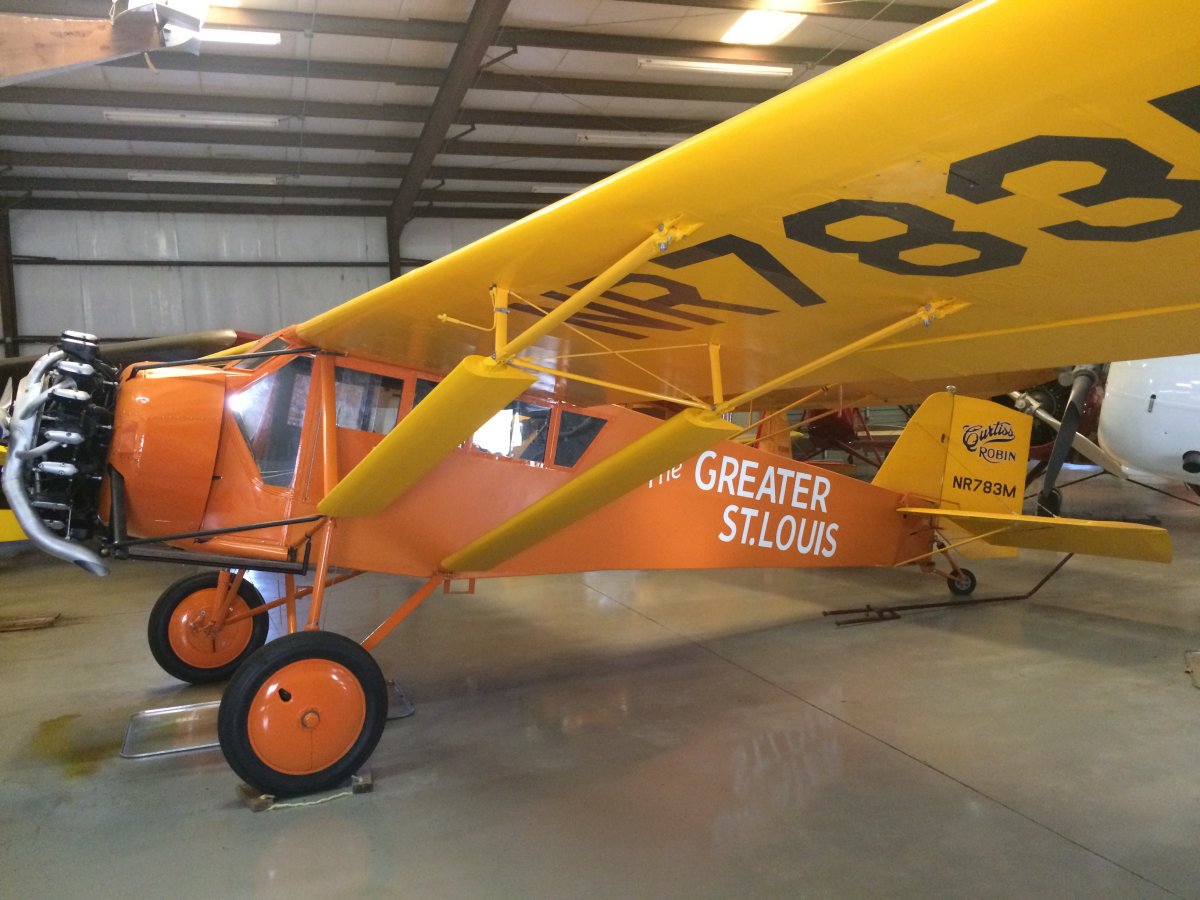 |
|
| Another Curtis Robin. This particular aircraft is a 1928 Curtiss Robin powered with a Milwaukee Tank engine. It is one of two in existence still using the Tank engine. |
| |
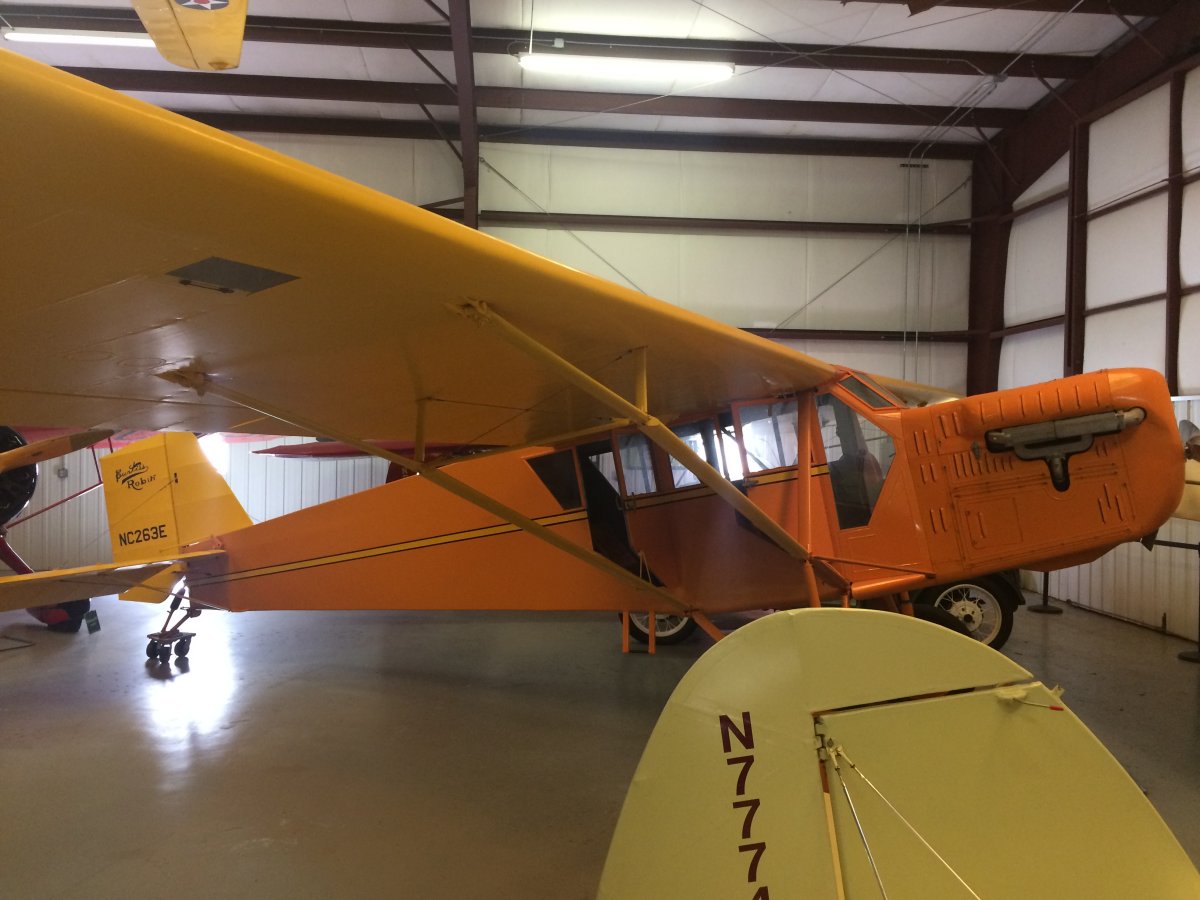 |
|
1929-built Fairchild KR-21 biplane. The type is sometimes referred to as the Kreider-Reisner KR-21. The Kreider-Reisner KR-21 was a 1928 American two-seat monoplane. They were designed and built by the Kreider-Reisner Aircraft Company of Hagerstown, Maryland. Fairchild Aircraft took over Kreider-Reisner in 1929 and continued to build them, as the Fairchild KR-21, later the Fairchild 21. About 45 were built. |
| |
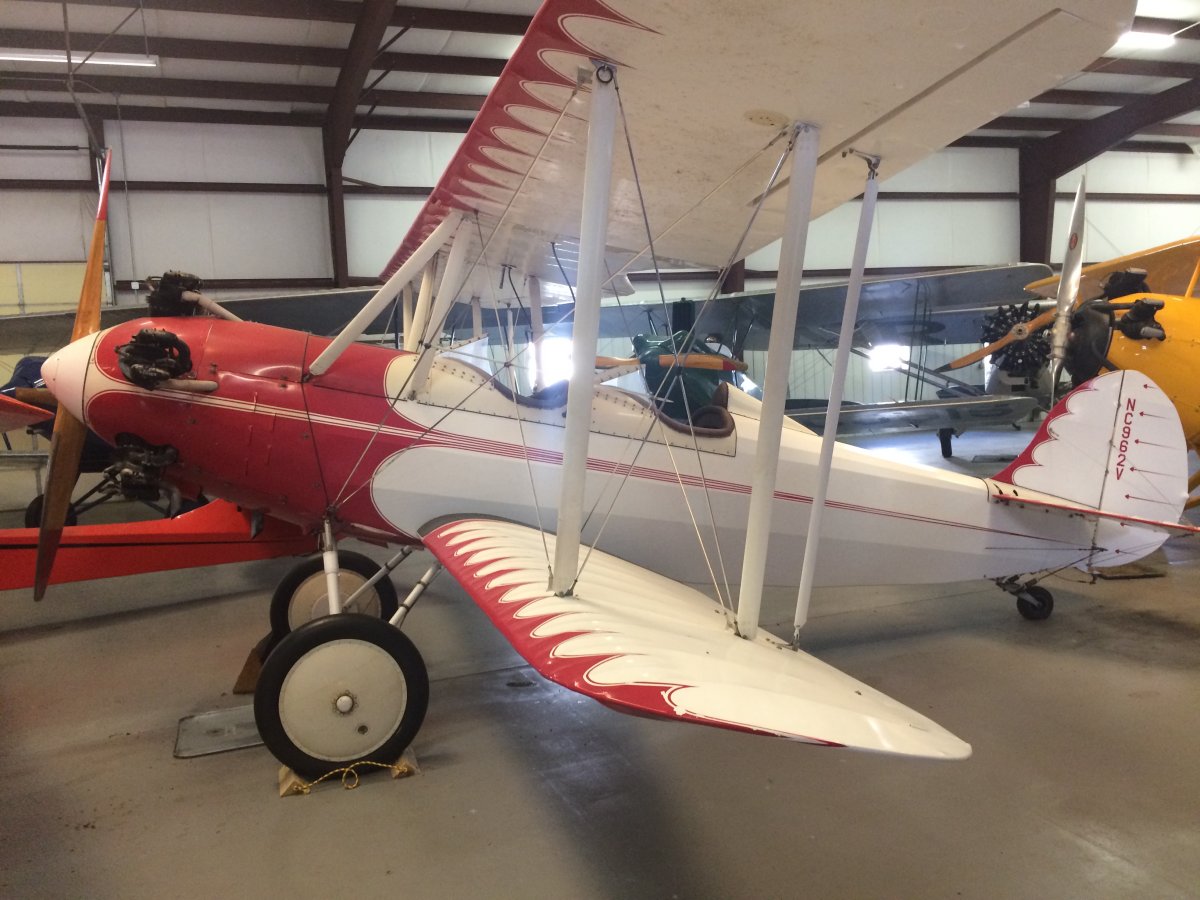 |
|
| This Curtiss Travel Air 16E was a high-performance training aircraft designed by Herbert Rawdon and Ted Wells and built in the United States in the early 1930s. Although a Curtiss-Wright designed aircraft it was also also marketed under the Travel Air brand that Curtiss-Wright had recently acquired in 1929. |
| |
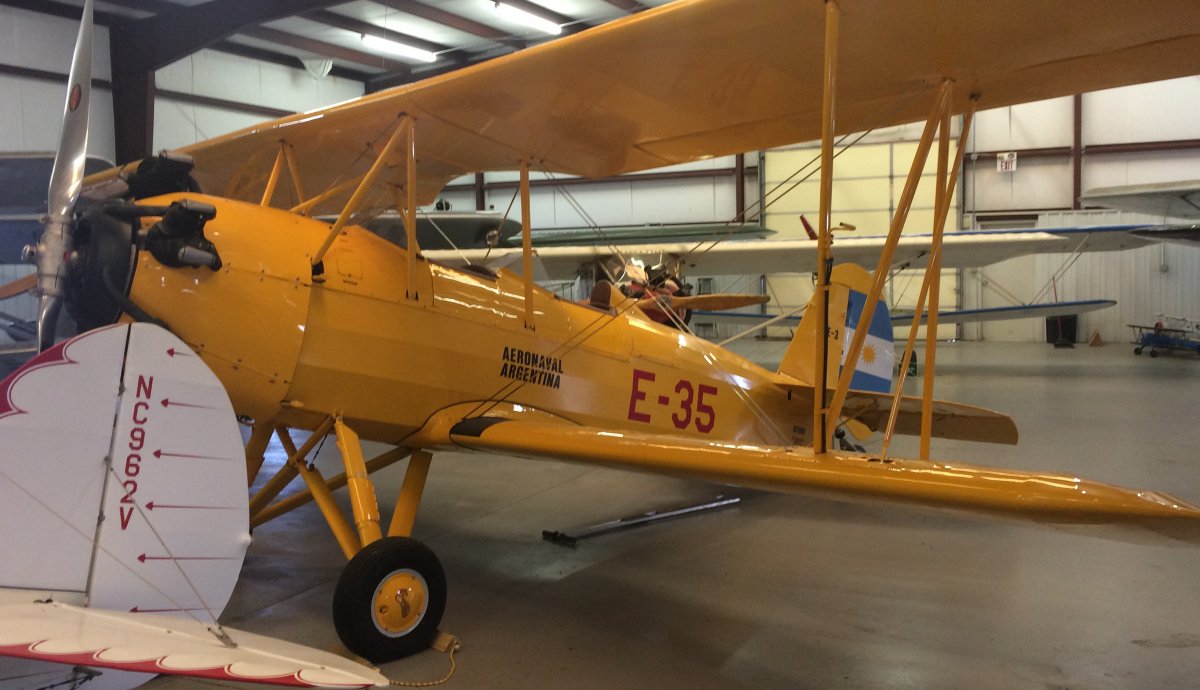 |
|
| The Monosport, built in 1929 by the Mono Aircraft Corportation in Moline, Illinois. In all, 16 Monosports were built. This is a Model 2 with the 100 horsepower Kinner K-5. This is the only Monosport still in existence. Monosports were a favorite of the air racers of the day. It has a top speed of 129 mph. |
| |
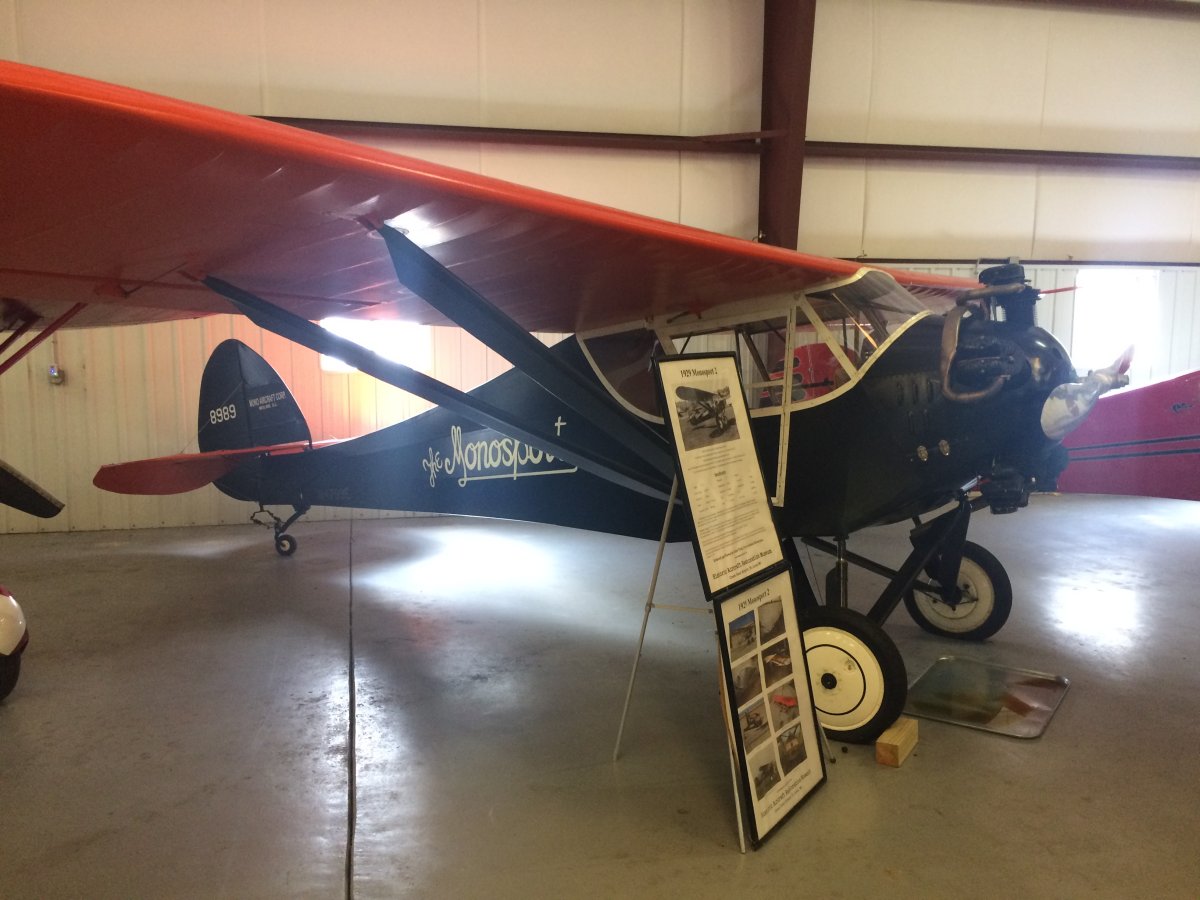 |
|
|
A good look at the Monosport's five cylinder Kinner and rounded cowl.
|
| |
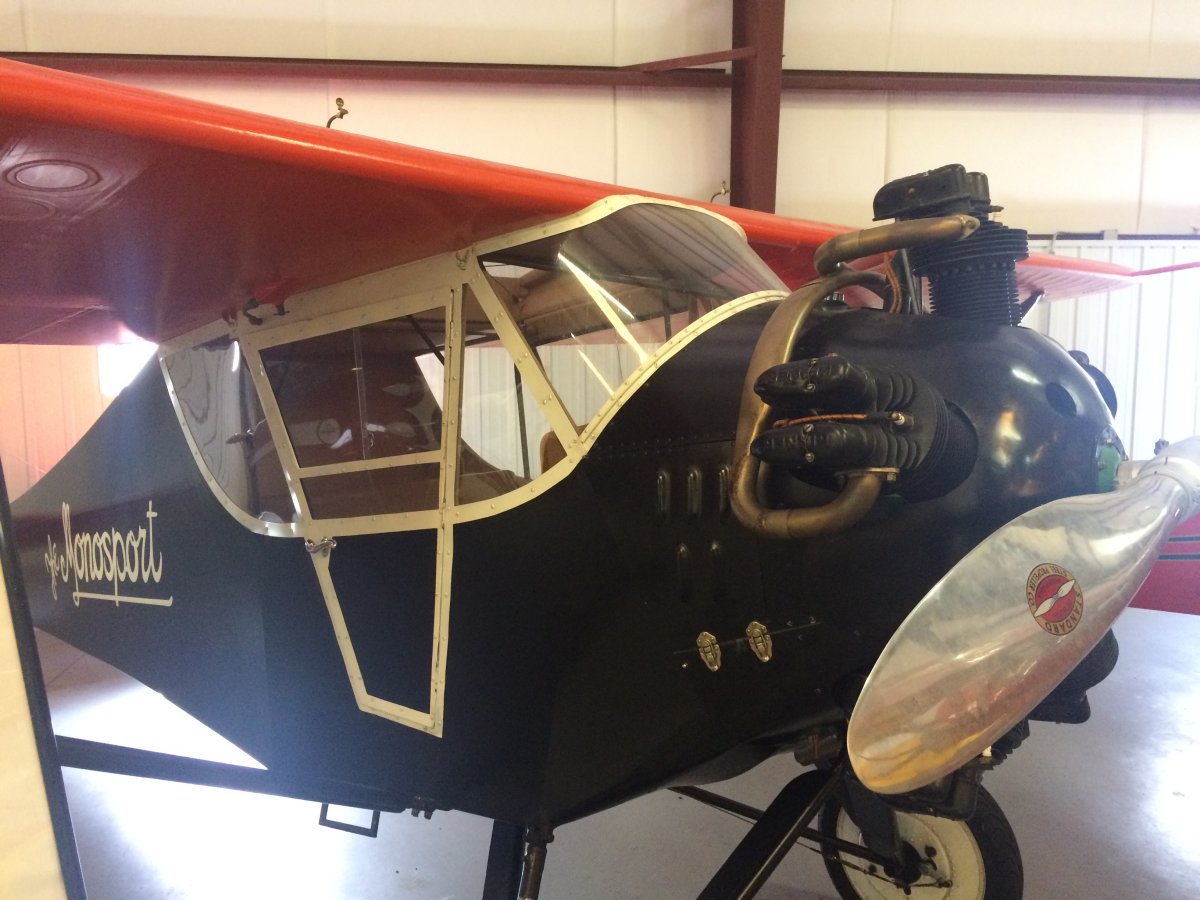 |
|
|
This 1933 Monocoupe 110 was a variant of the Monocoupl 90, a two-seat, light cabin airplane built by Donald A. Luscombe for Monocoupe Aircraft. It has a big, round 110 horsepower Warner Scarab radial engine.
|
| |
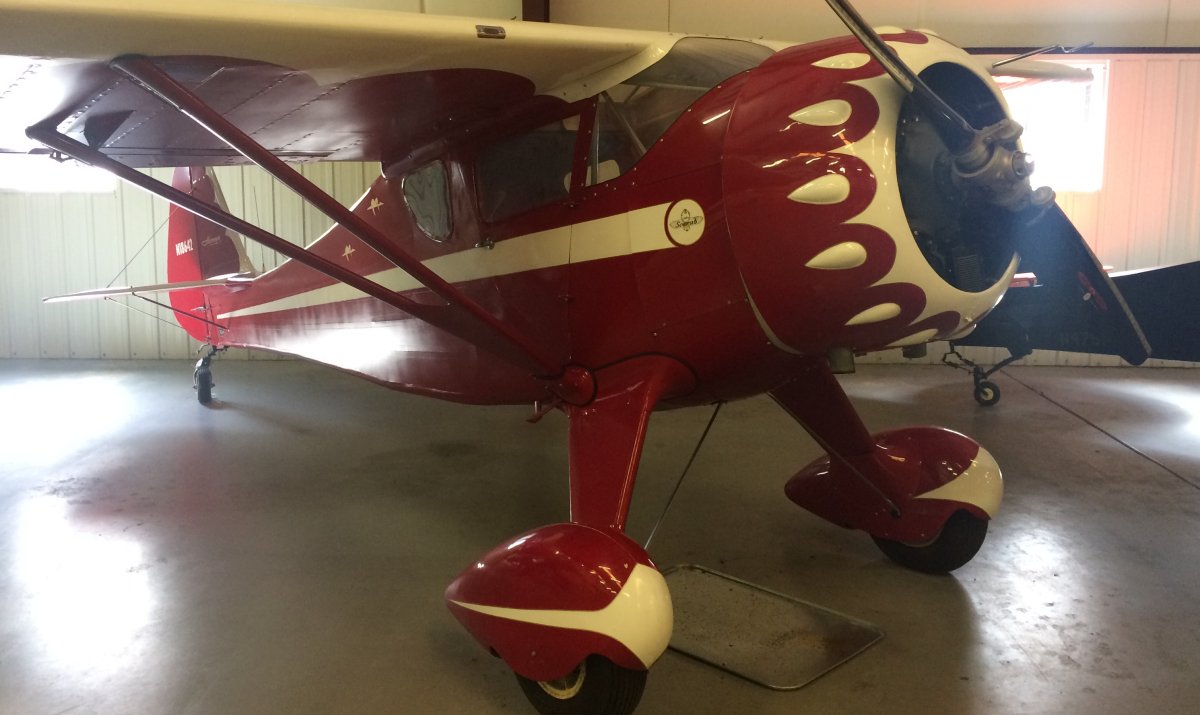 |
|
A 1927 Star Cavalier B. Manufactured by Star Aircraft, a division of Phillips Petroleumin. The model B is fitted with a Velie M-5 engine. Only 34 Cavaliers were built. |
| |
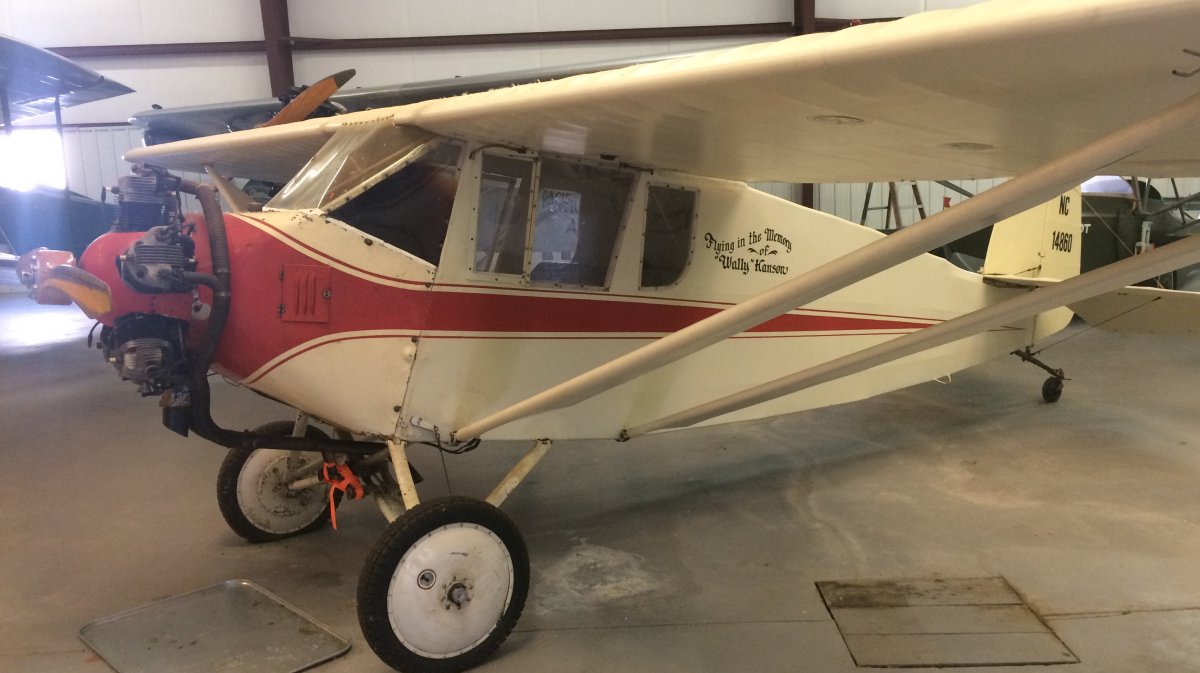 |
|
|
This 1927 Driggs Dart II is an American-built light sporting aircraft of the late 1920s. It is a sesquiplane - a biplane whose lower wing area is less than 50% of the area of the upper wing. Fewer than ten were built. It is powered by a 80 hp British Salmson AD9 air-cooled radial piston engine. It has a cruise speed of 80 mph. Max speed is 85 mph! This is the only airworthy example.
|
| |
 |
|
|
Monocoupe 90A
|
| |
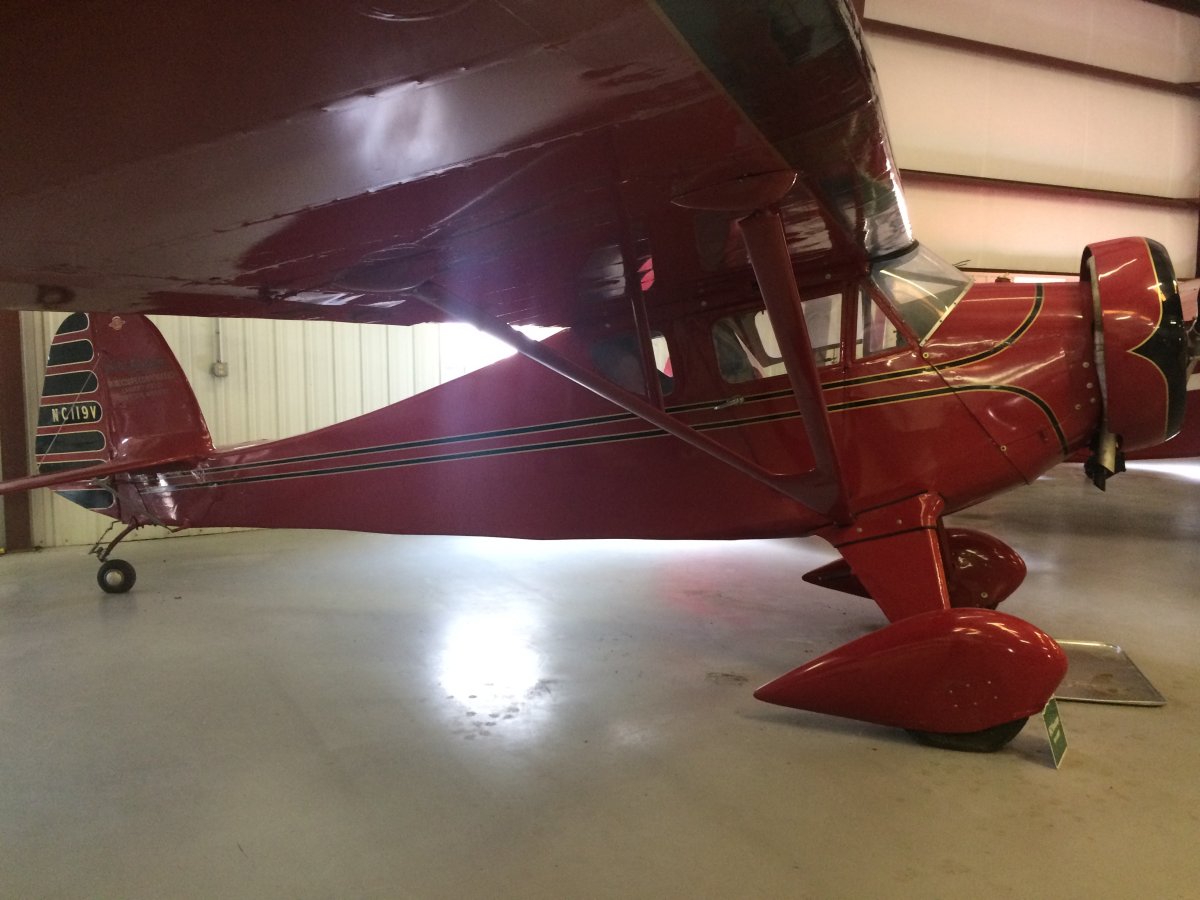 |
|
|
A 1928 Timm Collegiate Serial #1. This particular aircraft was flown by the great aviator Charles Lindburgh. It hasa 220 hp Continental radial engine.
Otto Timm founded the O.W. Timm Aircraft Corp in 1922 with its base at Glendale, California. The firm changed its name to the Timm Airplane Co in 1928. During 1928 Timm designed the Collegiate series of parasol-winged two-seat light aircraft fitted with fixed tailwheel undercarriage. Six aircraft were built between 1928 and 1930. Although only six were built, four are still around, including this one.
|
| |
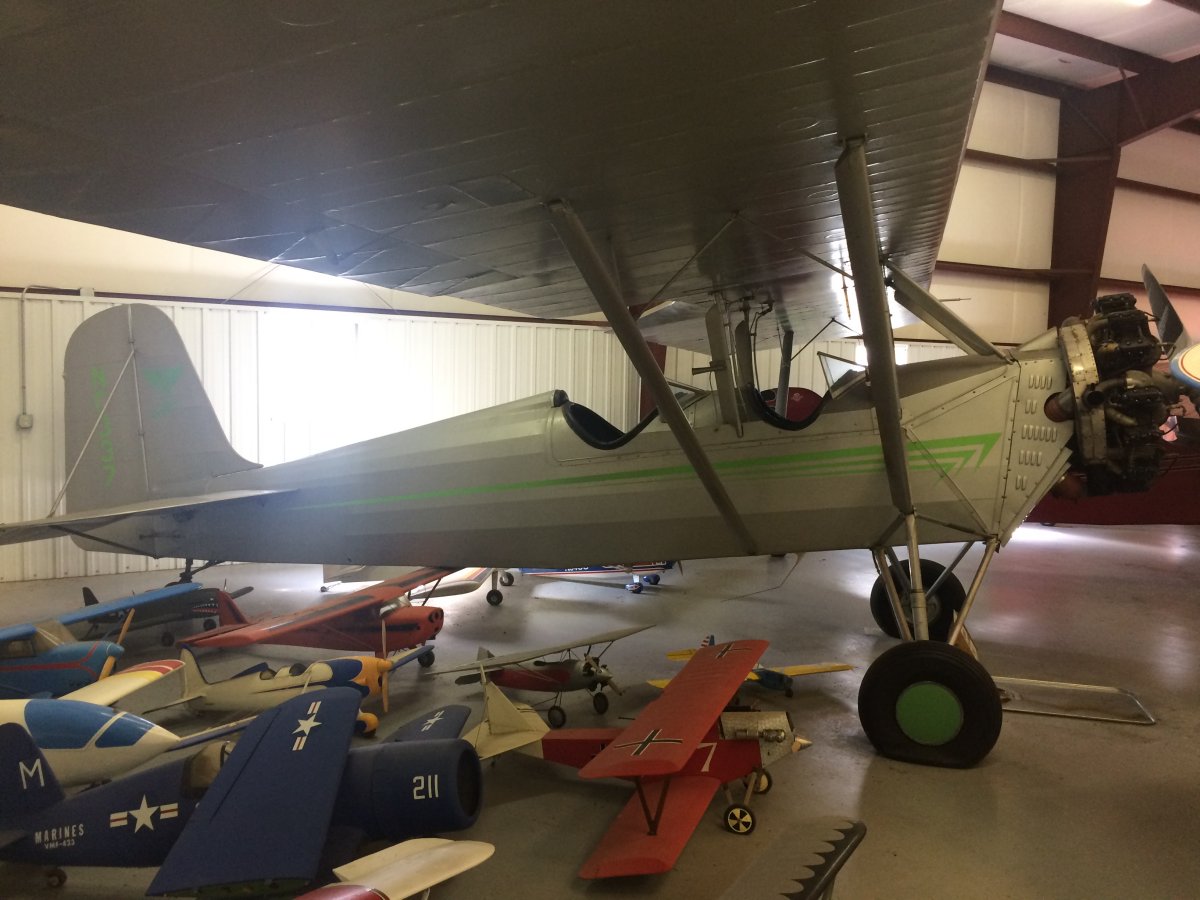 |
|
| Shavrov Sh-2, an open-cockpit, single-seat flying boat. Amazingly, this aircraft was used by the Soviet Union in combat during World War II, to hunt for German U-boats in the freezing Arctic waters! Series productions was initiated on 1 April 1934, and ended two years later. However, due to its successful design and the popularity among its pilots, production was restarted in 1939. Total production was up to at least 700 aircraft, several hundred of those being built after 1939 |
| |
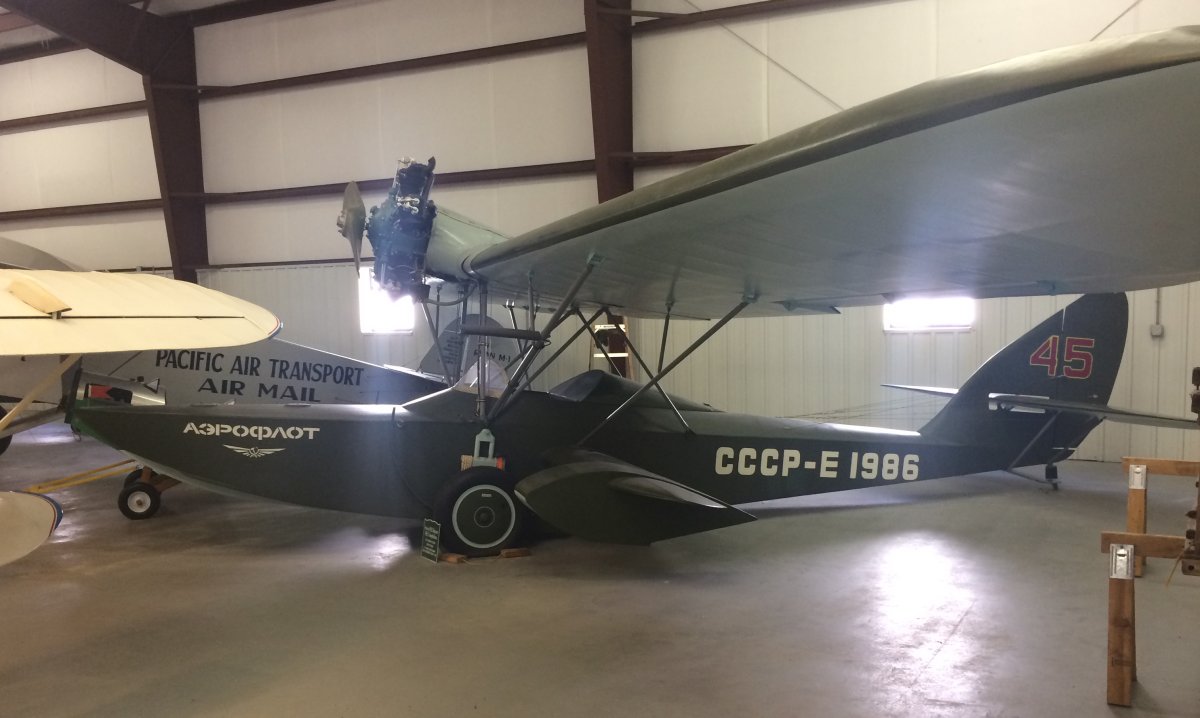 |
|
|
I know this plane! It's an Ryan M-1 mail plane, built from scratch by Andrew King. (Although for reliability purposes, he put a Lycoming R680 in it instead of the Wright J4 engine the M-1s had). If it looks sort of like the famous Spirit of St. Louis, that's because the Spirit was a modification of Ryan's M-1 mail plane. I remember when this plane was nearing completion, sitting in one of the glider hangars at Jan Scott's Flying Cow airstrip.
|
| |
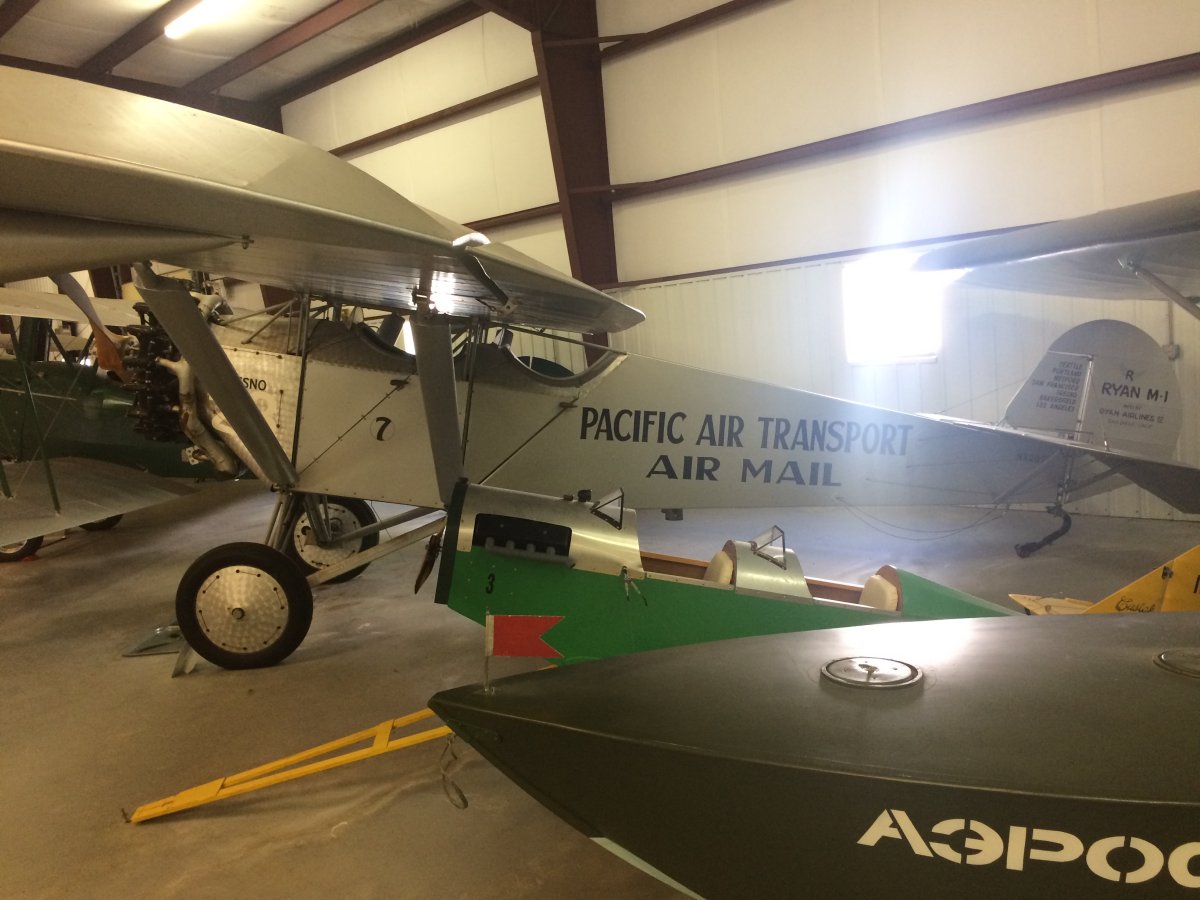 |
|
| Close up with a clear view of the R680. |
| |
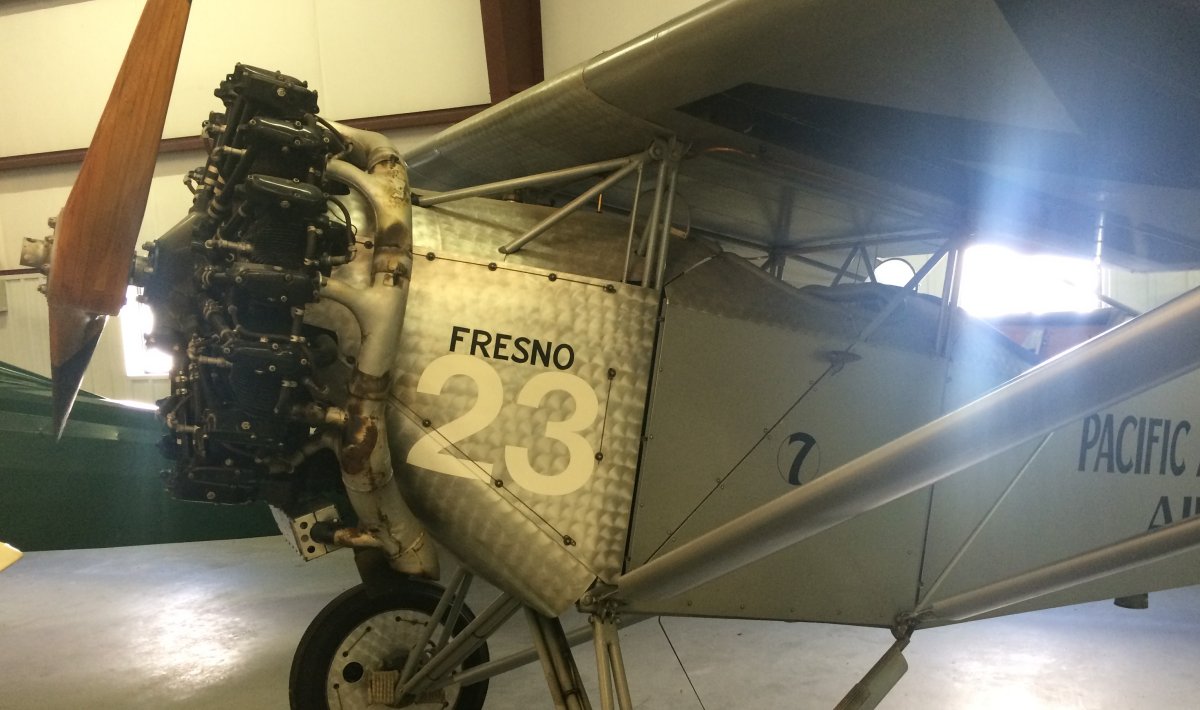 |
|
Another Kreider Reisner design absorbed by Fairchild is this 1928 KR31 Challenger, a perfect example of the inexpensive aircraft that were common until the supply of World War One Curtiss OX-5 engines ran out in the early 30s. (Despite the V-8 liquid-cooled aircraft engine beomg considered unreliable for most of its service life!) Notice the big radiator in front of the cockpits! |
| |
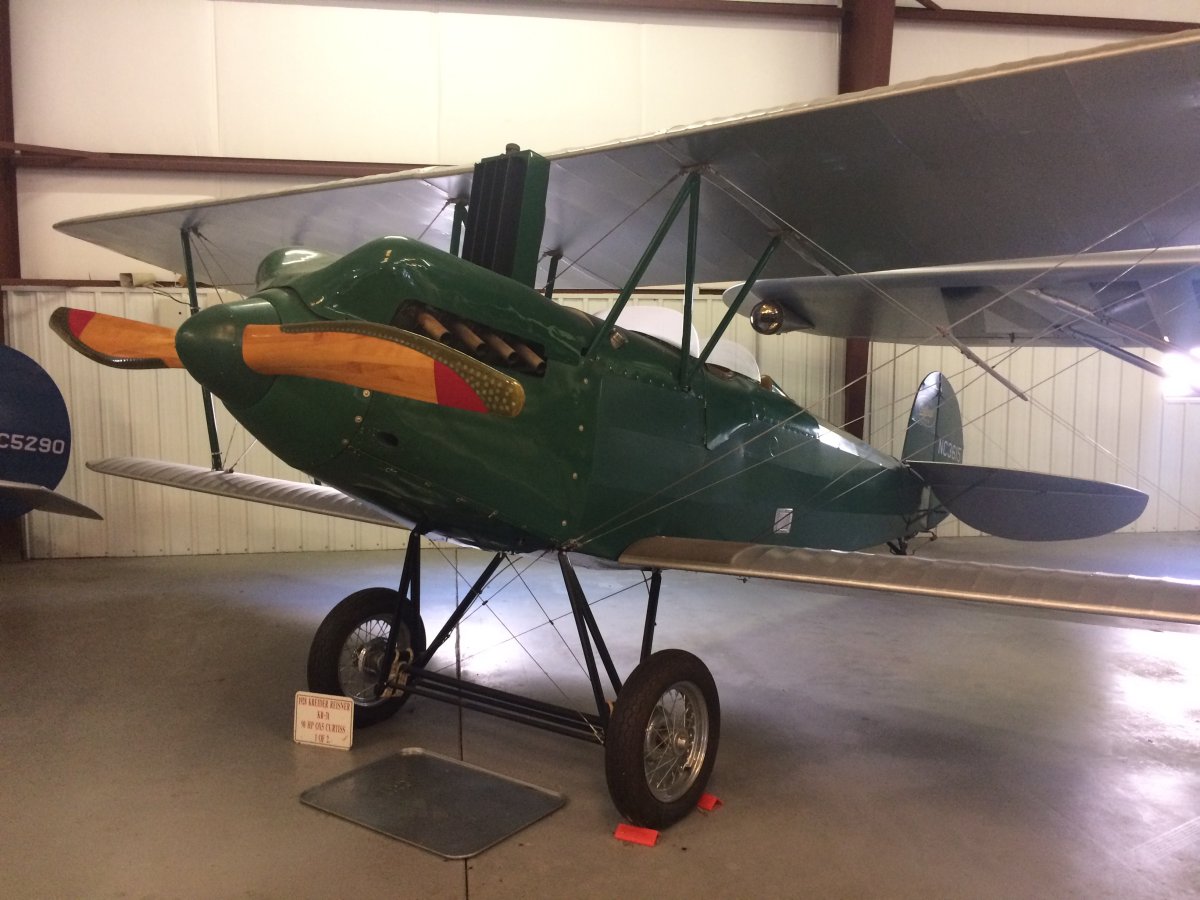 |
|
|
A Travel Air 2000 biplane (1928) with OX-5 engine.
The Travel Air 2000/3000/4000 (originally, the Model A, Model B and Model BH) were open-cockpit biplane aircraft produced in the United States in the late 1920s by the Travel Air Manufacturing Company. During the period from 1924–1929, Travel Air produced more aircraft than any other American manufacturer, including over 1,000 biplanes. The models 2000, 3000, and 4000 were pretty much the same except for their motors: OX-5, Hisso, and Wright respectively.
The Travel Air Model A was engineered chiefly by Lloyd Stearman, with input from Travel Air co-founders Walter Beech, Clyde Cessna, and Bill Snook. Yes, Stearman, Beech and Cessna were partners together at Travel Air before each starting their own aircraft manufacturing companies.
|
| |
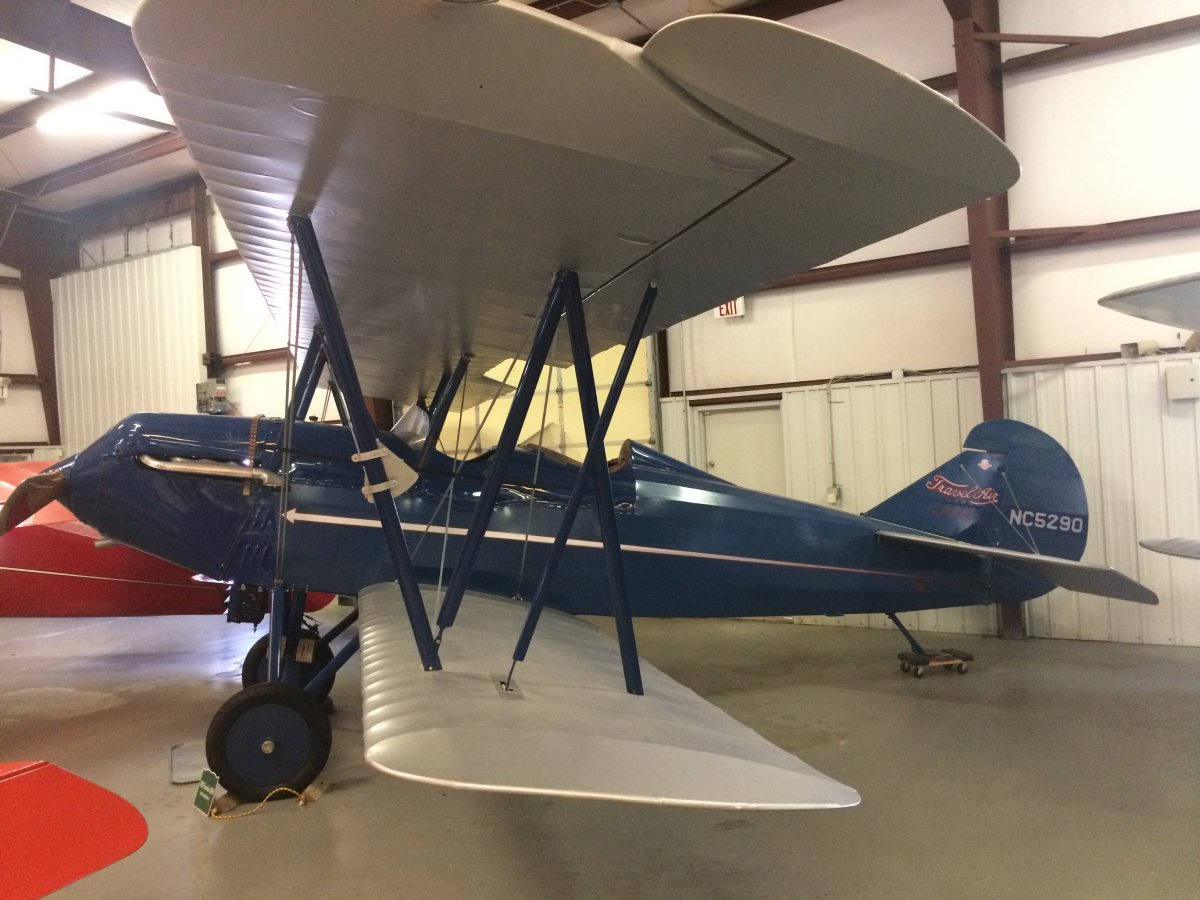 |
|
| I've always liked the de Havilland Dragon Rapide, although usually they have fancier paint schemes. It's an eight passenger, twin engined light transport built in the 30s. The pilot sits up front by himself in a single-place cockpit. |
| |
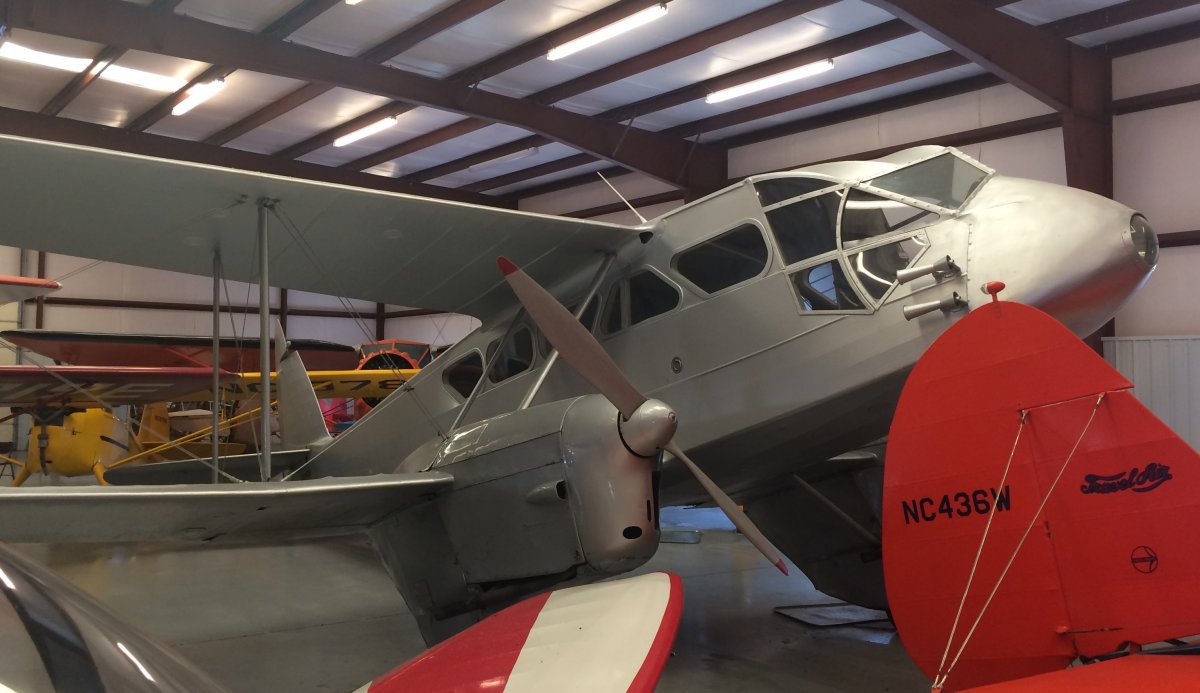 |
|
|
Big 1931 Curtiss-Wright 15-C Air Sedan, one of 15 built by Travel Air and Curtiss-Wright. 15 of the 4-seaters were built. This is the first one built and last one to survive.
|
| |
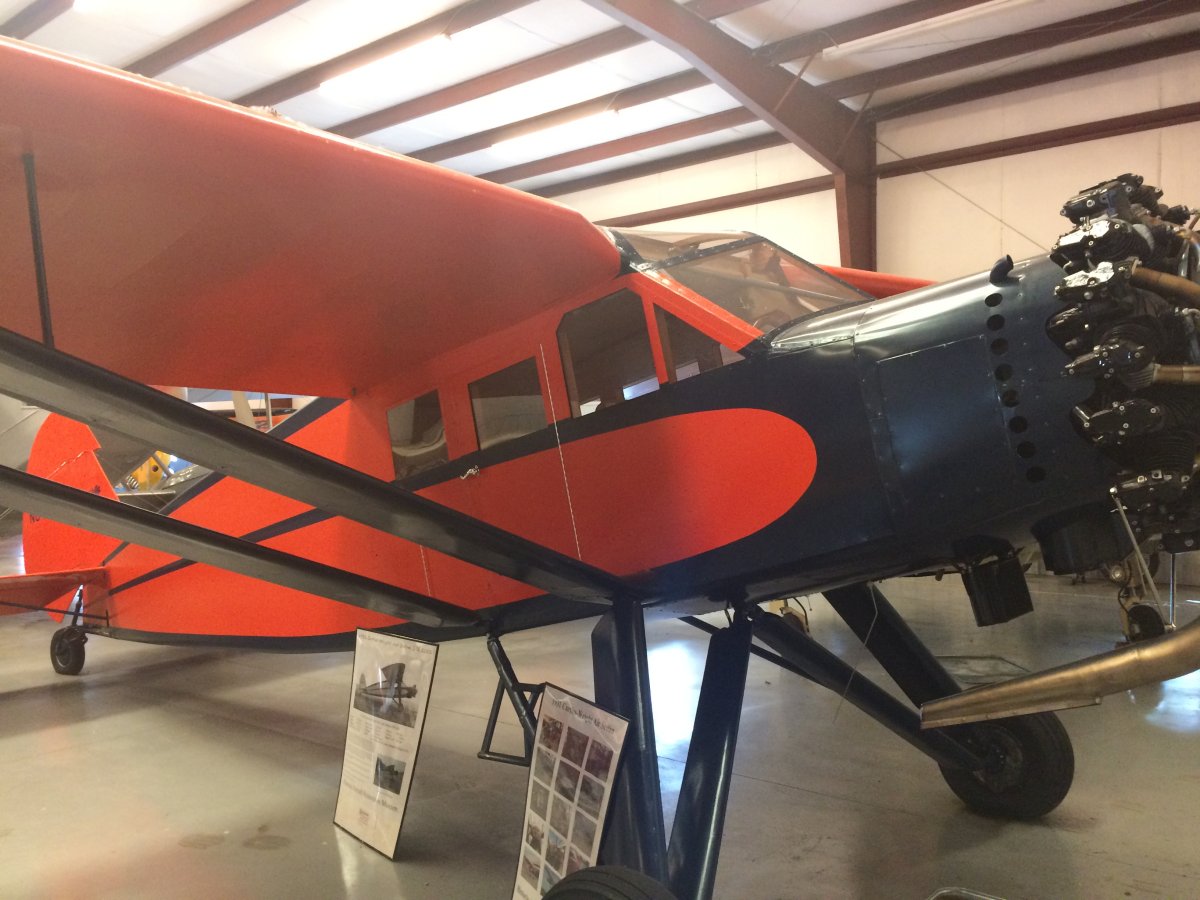 |
|
|
The Culver Dart was a 1930's two seat aircraft and was designed by Al Mooney (who later had his own aircraft company). In the early 1930s Mooney was working for the Lambert Aircraft Corporation, builders of the Monocoupe series aircraft. He designed a small two-seat monoplane called the Monosport G but when the company ran into financial difficulties Mooney bought the rights to his design and with K.K. Culver formed the Dart Aircraft Company. The aircraft was renamed the Dart Dart. It later became the Culver Dart. Just under 100 were built and this example, NC41621, was built in 1946.
I should know this plane. I saw a derivative of it -- a 1966 Helton LARK 95 in pieces and covered with dust -- back in February in a long barn at Miller's Farm on the Eastern Shore. Link
|
| |
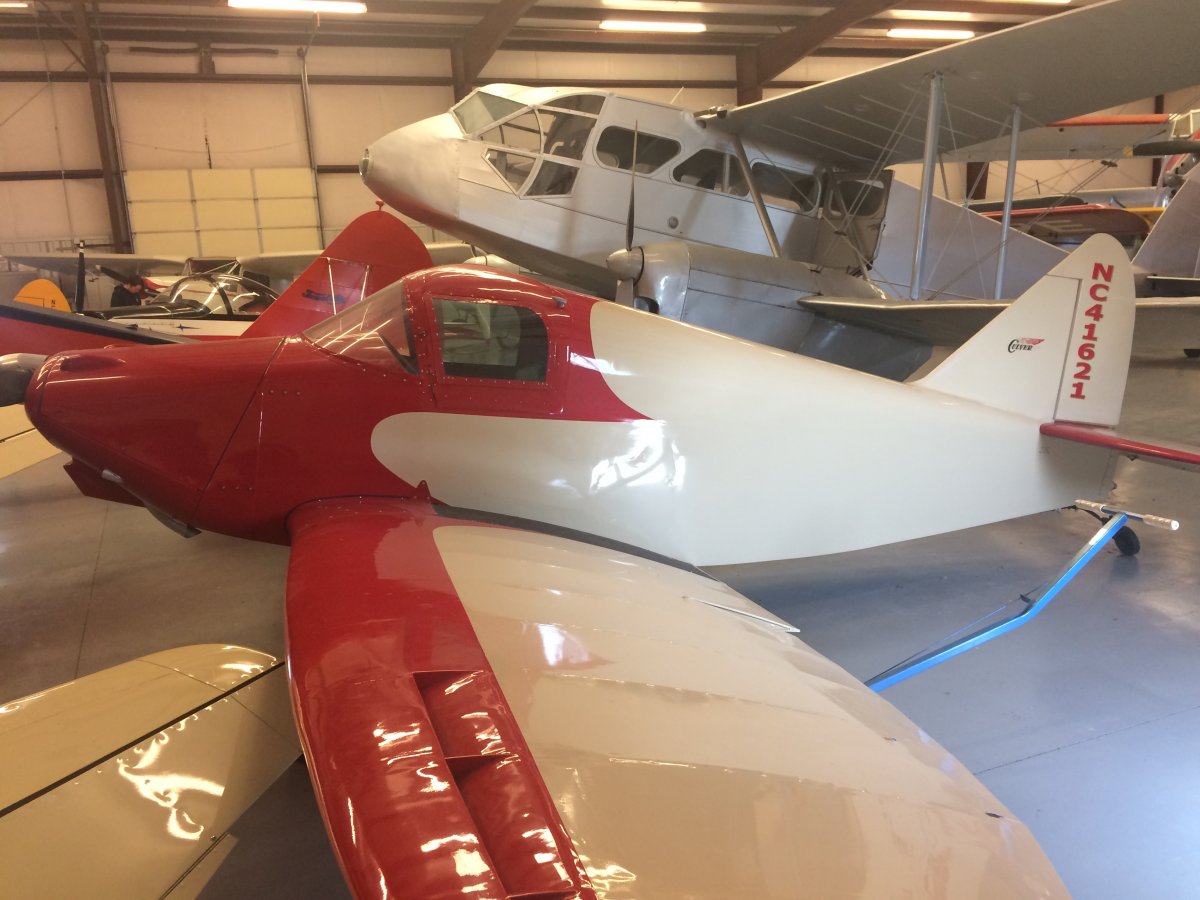 |
|
|
I really liked the paint scheme on this Ryan STM. Originally built as a Sport Trainer, the design was modified into a trainer for the military: the PT-22 Recruit -- one of which currently hangs in Udgar-Hazy -- and was used by the United States Army Air Corps during WWII for primary pilot training.
This particular ST has a 200 hp Ranger inline, inverted six engine, as opposed to the standard R-55 Kinner radial.
|
| |
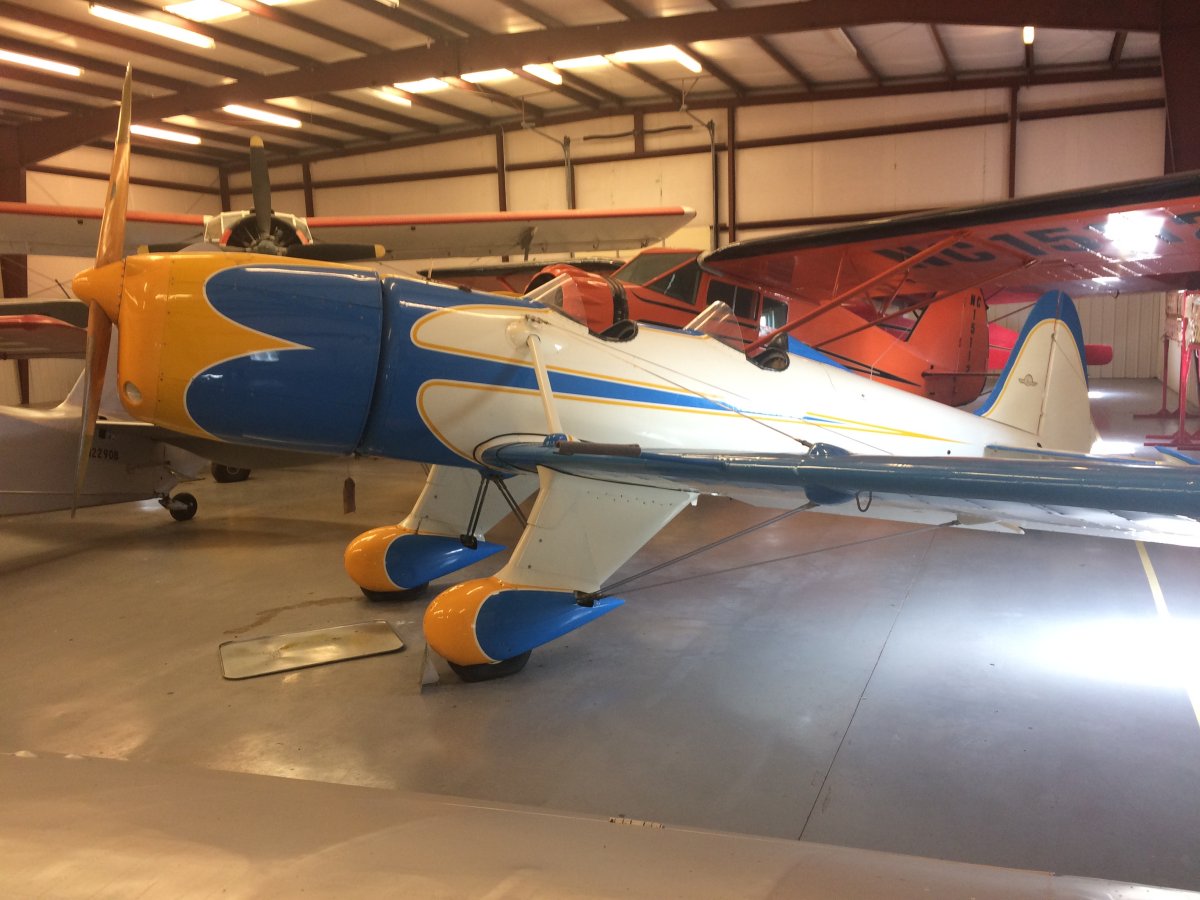 |
|
|
Stinson SR-6 Reliant. Between 1933-43 the Stinson Aircraft Company built an aircraft called the Reliant. Over the years different versions were introduced which were numbered SR-1 to SR-10. A total of 1, 327 of all versions were built. This aircraft, NC15112, is an SR-6 five-seat cabin aircraft, powered by a Lycoming R-680-6 radial piston engine.
The Reliant was used by the United States Army Air Forces in World War II as a utility aircraft, designated UC-81, and as trainer designated AT-19. The Royal Navy and Royal Air Force also used Reliants, for light transport and communication duties.
|
| |
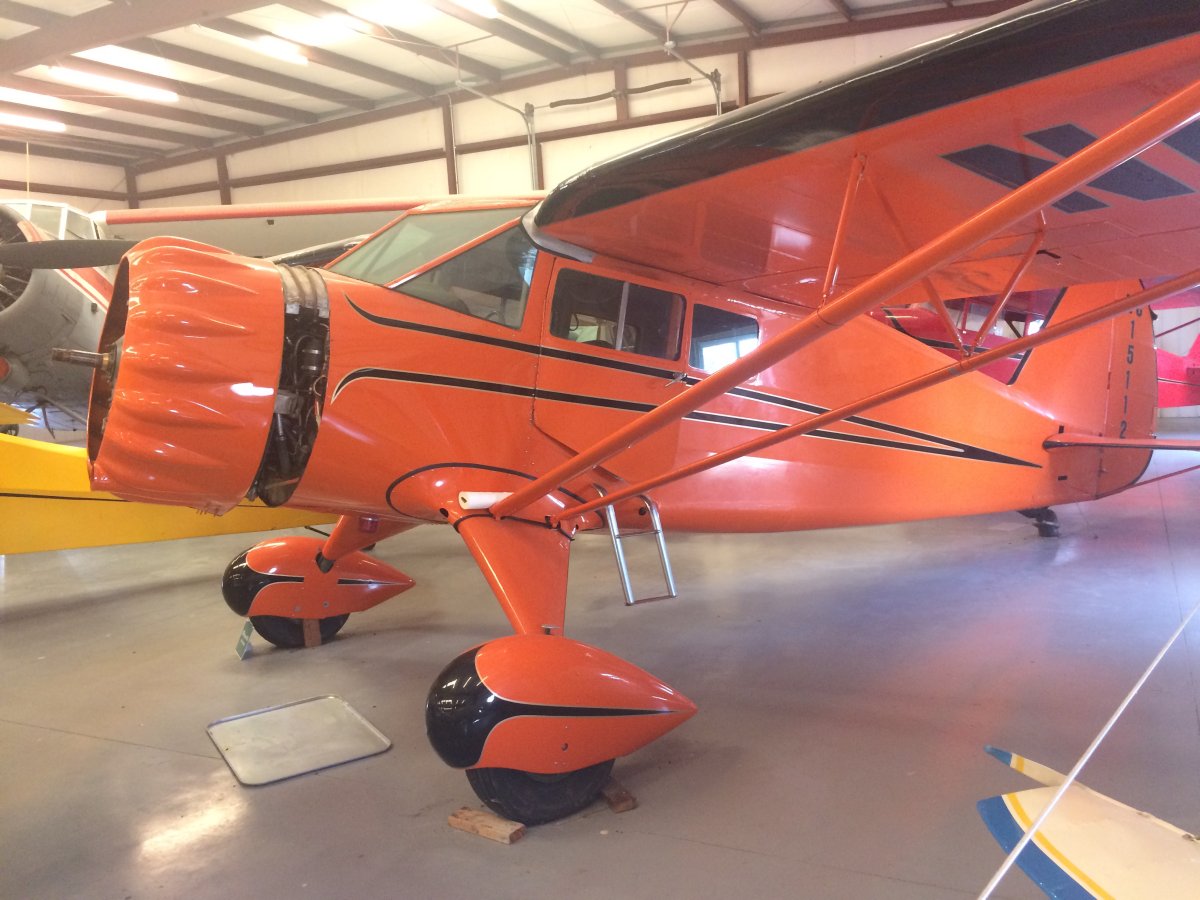 |
|
A 1936 Rearwin Sportster. It is a two-seat, high-winged, cabin monoplane designed and built by Rearwin Aircraft & Engines for sport/touring use. 273 were built. |
| |
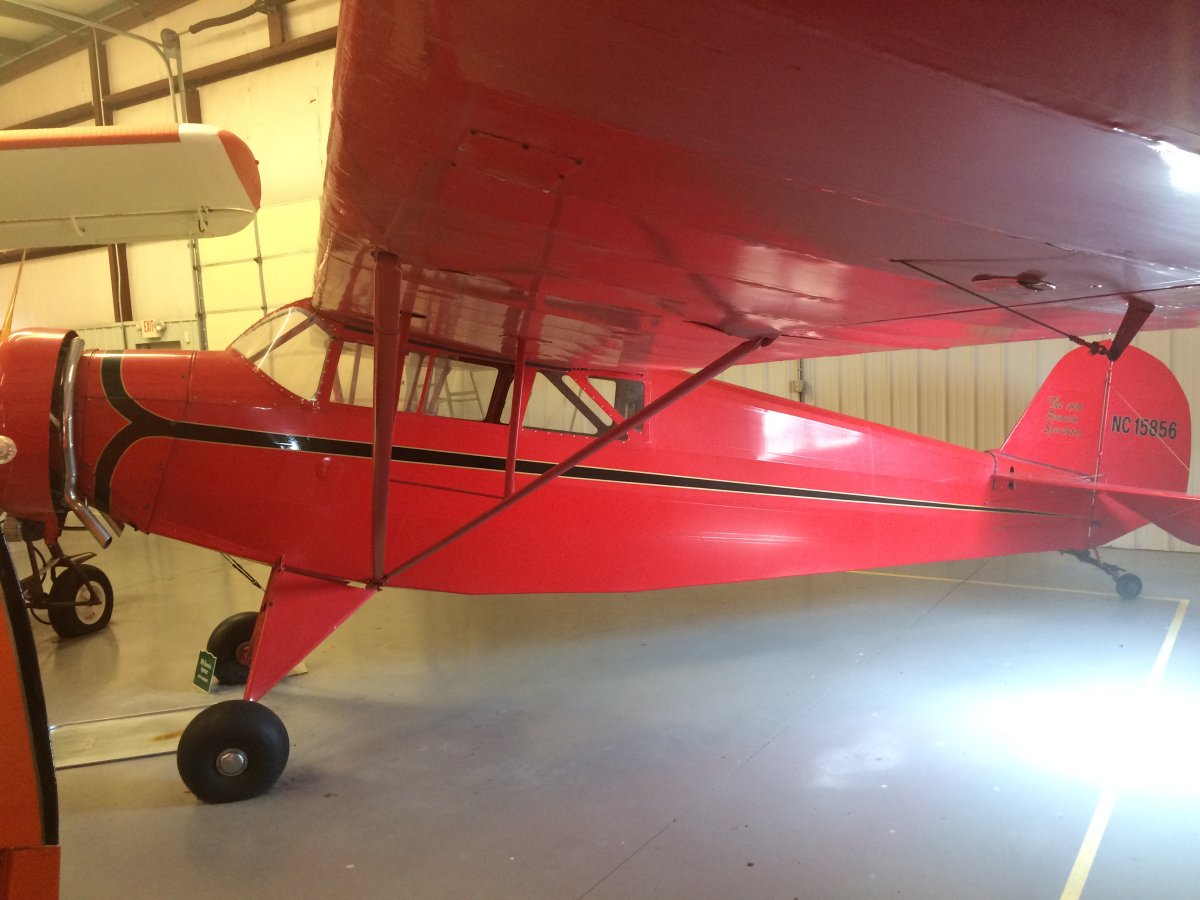 |
|
| A unique Gee Bee under restoration. The Gee Bee was a special-purpose racing aircraft made by Granville Brothers Aircraft of Springfield, Massachusetts at the now-abandoned Springfield Airport (Massachusetts)Gee Bee stands for Granville Brothers. Jimmy Doolittle won the 1932 Thompson Trophy race in one of them. I saw a replica Bee Gee fly at AirVenture many years ago; it was way cool. |
| |
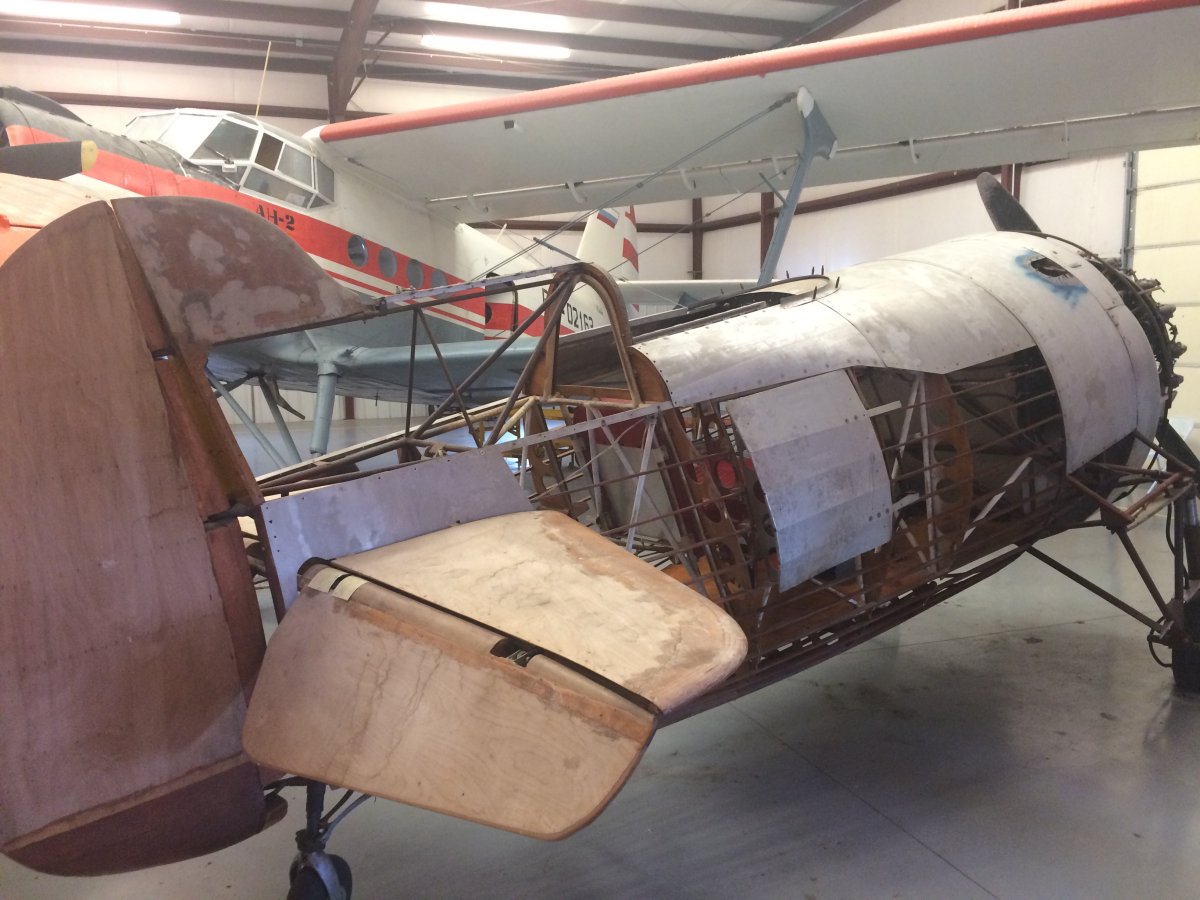 |
|
|
|
| |
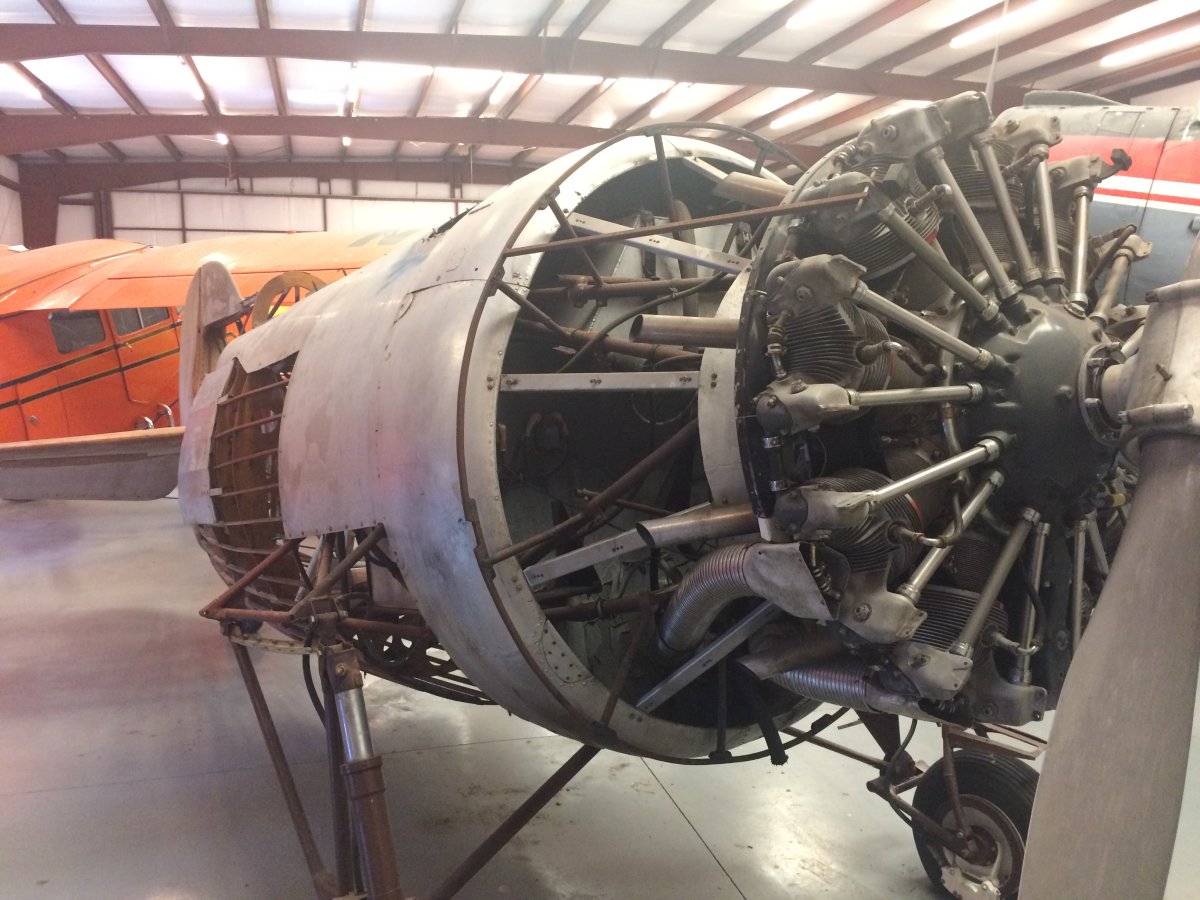 |
|
| The gigantic Russian Antonov AN-2 biplane. It can take off in 600 feet, carry a ton of stuff, but only cruises at 100 mph. |
| |
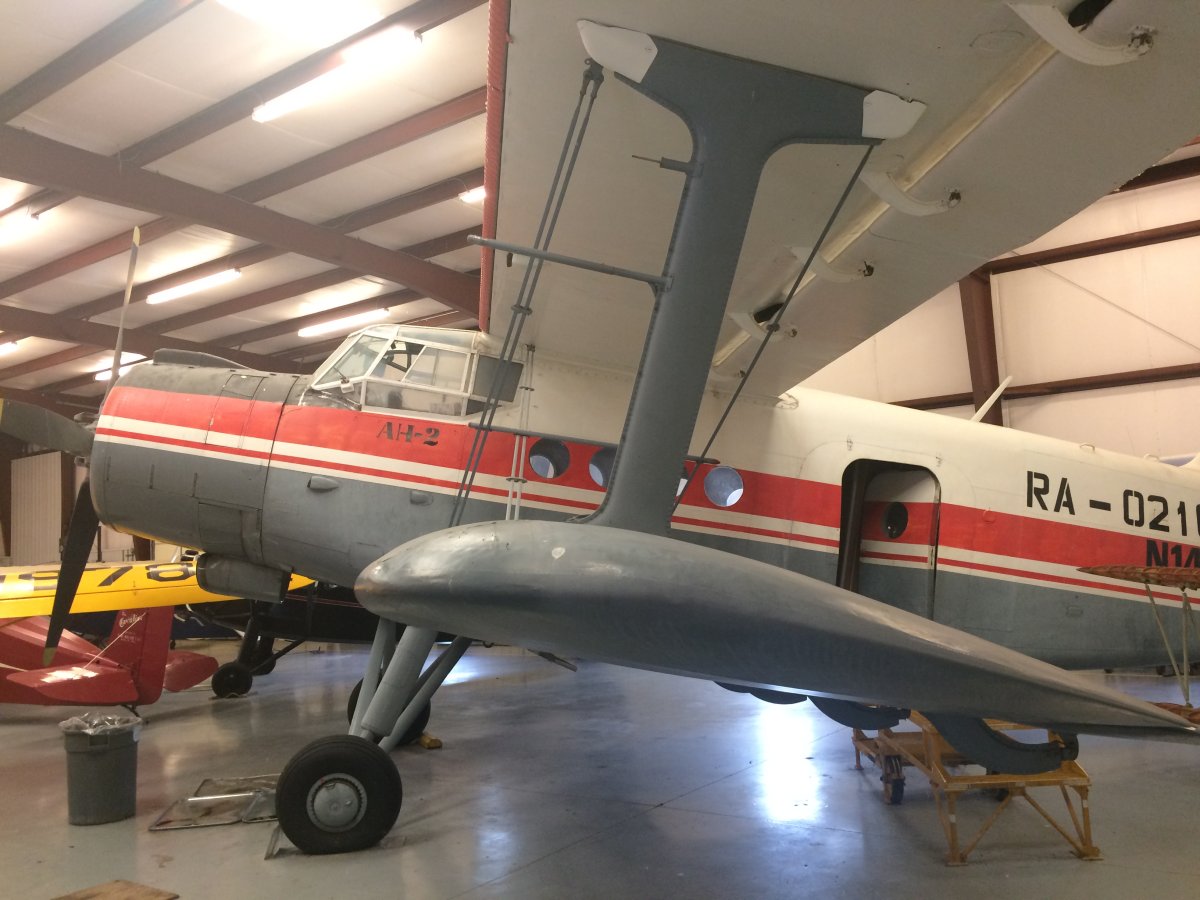 |
|
| 1933 Fairchild Model 24 C8A with 125-hp Warner Scarab radial engine. A four seater, it cruises at 95 mph. Popular with prominent businessmen and Hollywood actors, over 2,000 were built. |
| |
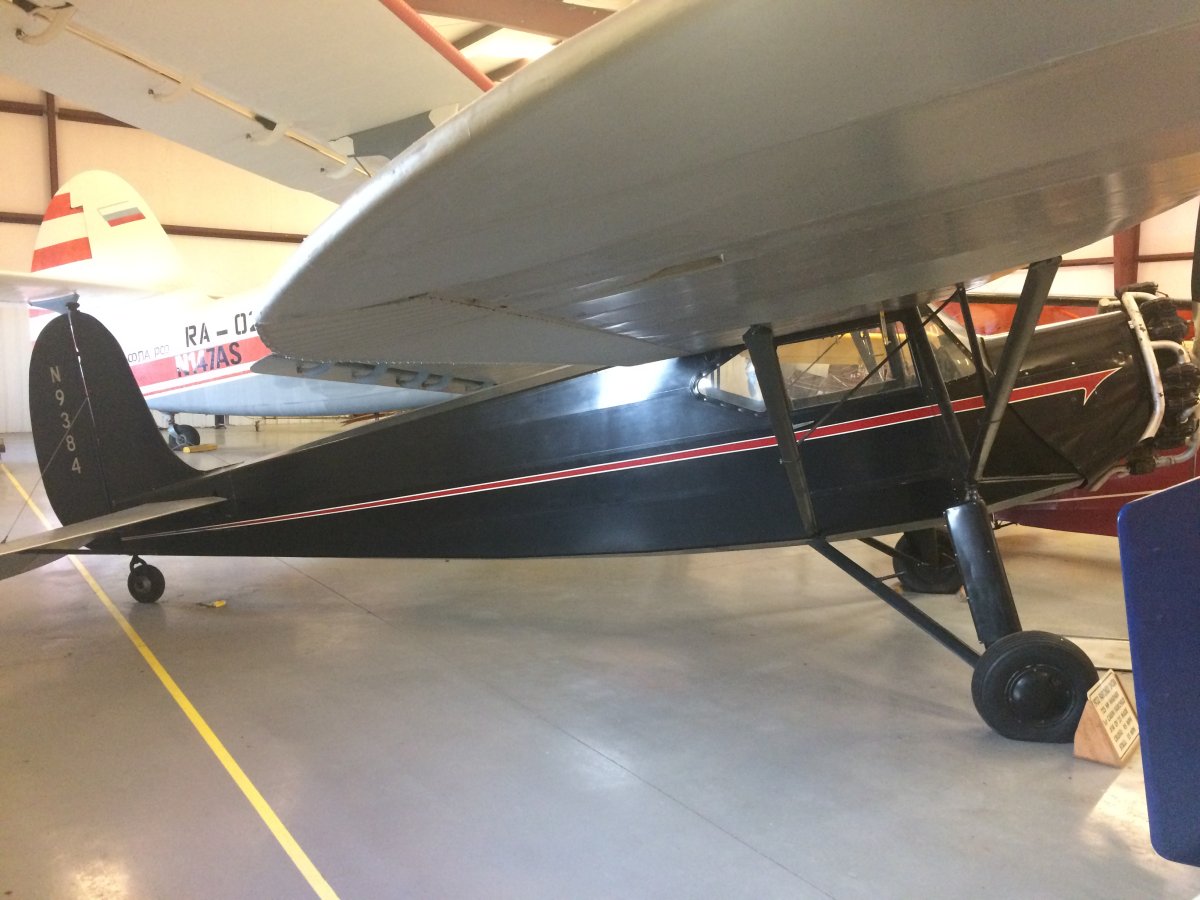 |
|
| A Travel Air 3000. |
| |
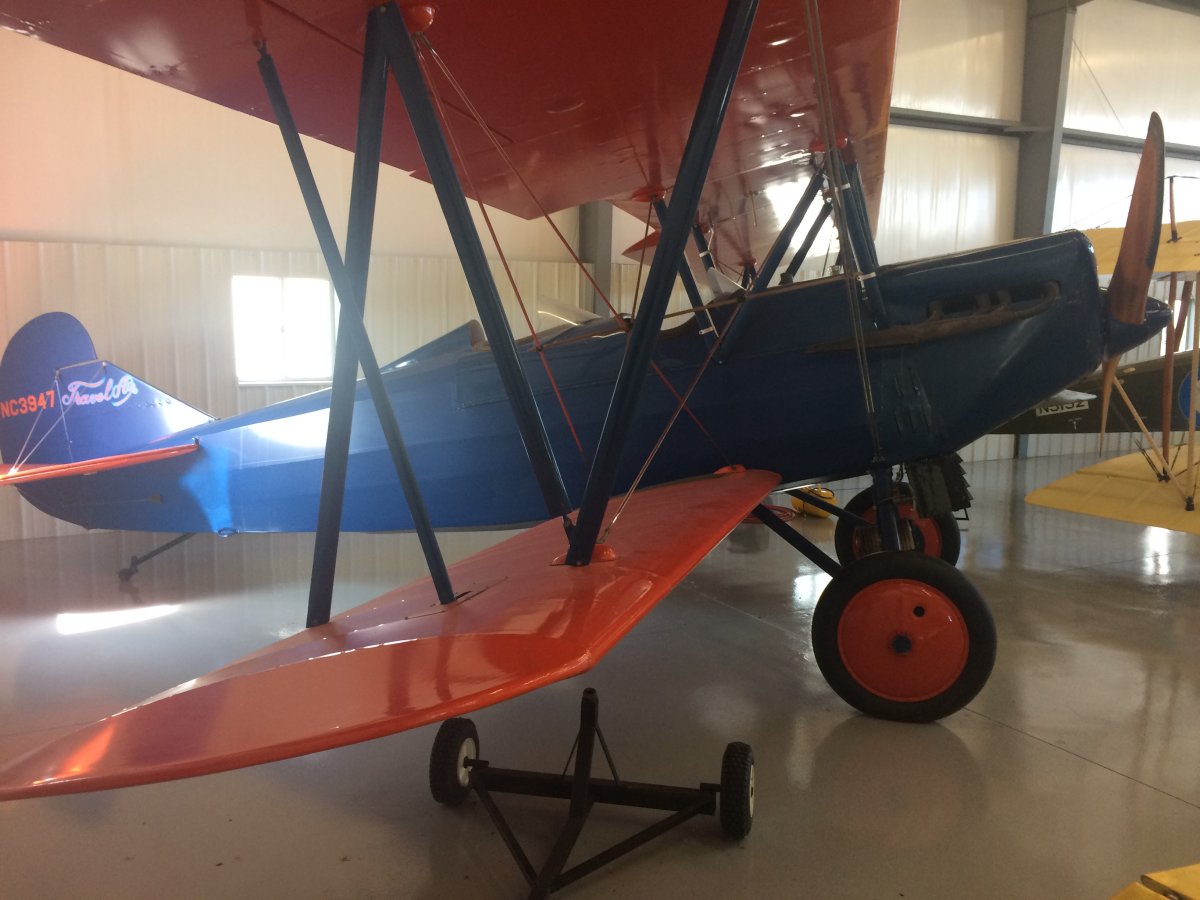 |
|
This biplane has one of the great airplane names: Brunner-Winkle Bird. It's a three-seat biplane built in 1929 and still airworthy. It's fitted with the original Curtiss OX-5 engine - hence Bird A designation. 240 Birds were built of all Models 1928-1931. |
| |
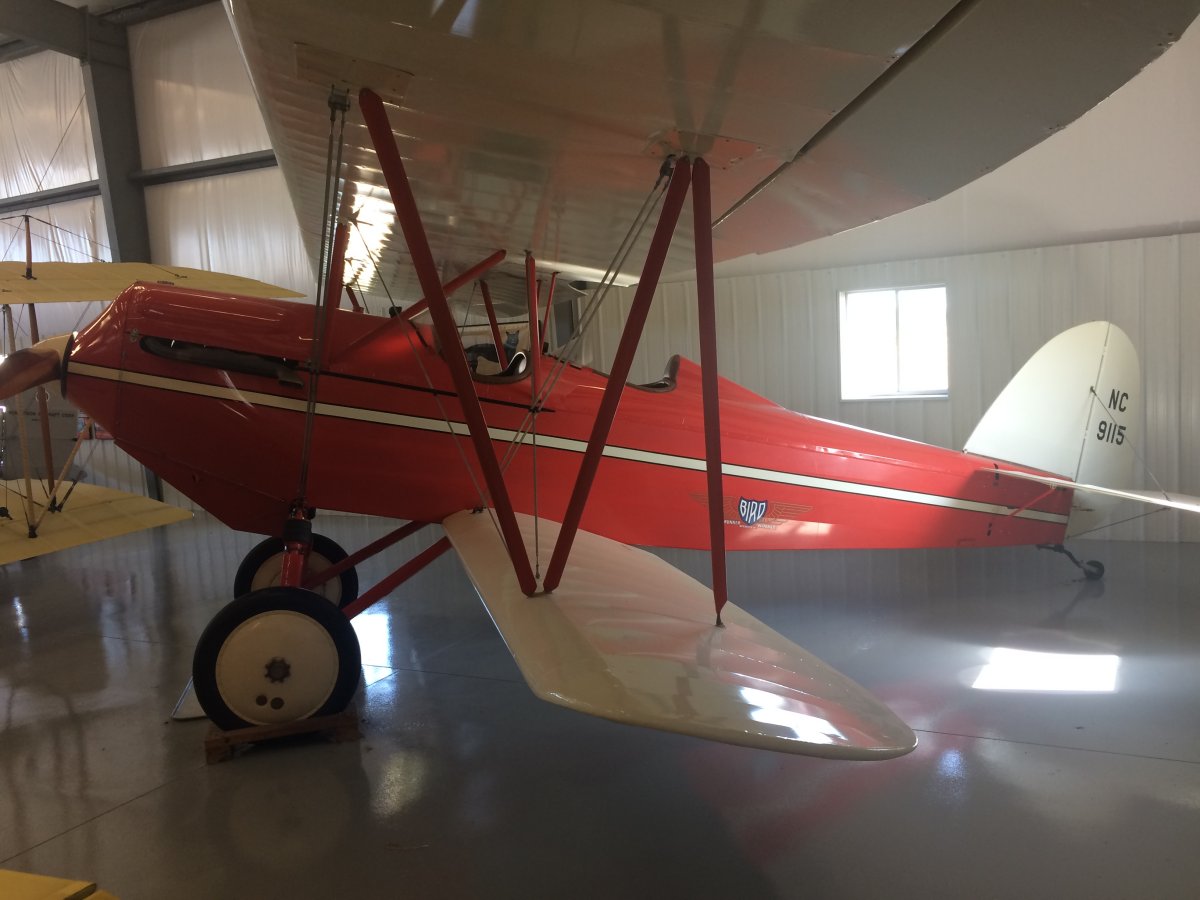 |
|
De Havilland DH-4. The DH-4 was a British two-seat biplane day bomber of the First World War. It was designed by Geoffrey de Havilland (hence "DH") for Airco, and was the first British two-seat light day-bomber to have an effective defensive armament. 6,295 were built, of which 4,846 were built in the United States. The U.S. variants used the Liberty engine.
After the war, the U.S. Post Office also adopted the DH-4 to carry air mail. The Service acquired 100 of them from the army in 1918, and retrofitted them to make them safer, denominating them as the DH.4B. In 1919, the DH-4B was standardised by the US Post Office, being modified to be flown from the rear cockpit with a 400 lb watertight mail compartment replacing the forward cockpit. The airmail DH-4B were later modified with revised landing gear and an enlarged rudder. DH-4s were used to establish a coast-to-coast, transcontinental airmail service, between San Francisco and New York, a distance of 2,680 miles, involving night flight, the first services starting on 21 August 1924. The DH-4 continued in Post Office service until 1927, when the last airmail routes were passed to private contractors.
This immaculately restored airplane looks much better in the light. For good pictures click here: Link. For an interesting story of this airplanes flight from Creve Coeur to AirVenture 2007 click here: Link. |
| |
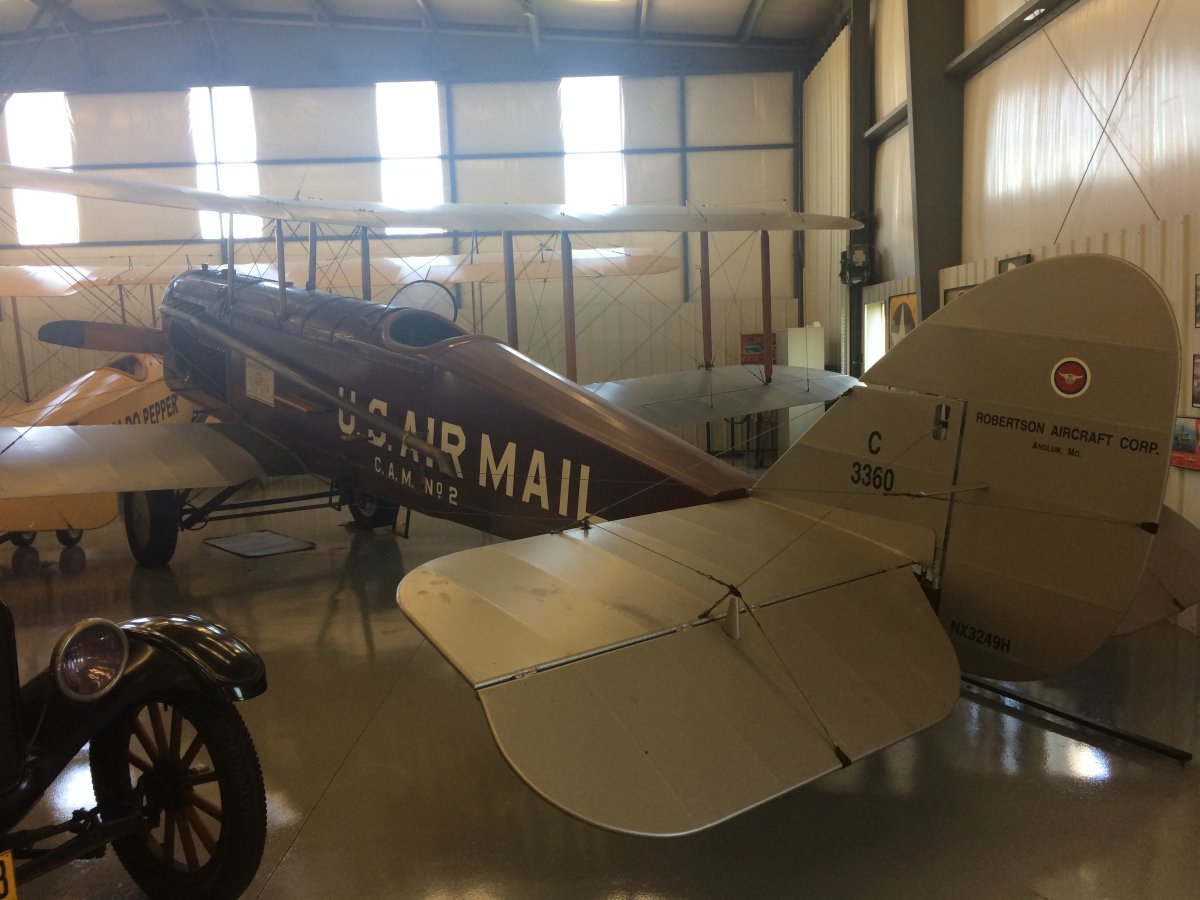 |
|
| This 1916 Canuck is a Canadian-built version of the Curtiss Jenny. The big plane is powered by a 90hp OX-5 engine. |
| |
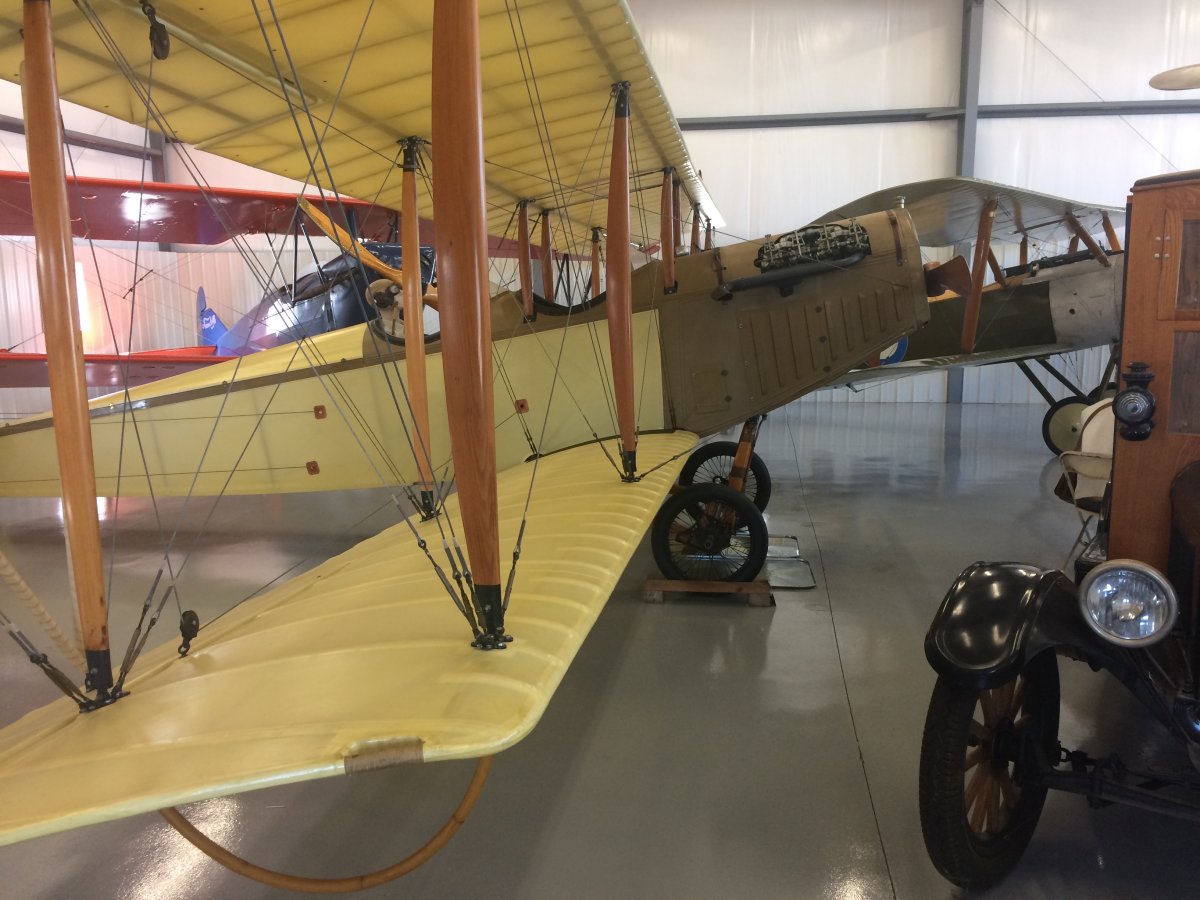 |
|
|
The oldest airplane in the museum is this Standard J-1 that was built in 1917. You know it better as the plane that was used in the great aviation movie: The Great Waldo Pepper. The Standard J1 had been rebuilt in 1976 for the movie. But by 2009 it was in great need of restoration. And now it looks great!
The Standard J is a two-seat basic trainer two-bay biplane produced in the United States from 1916 to 1918. The J-1 was built as a stopgap to supplement the Curtiss JN-4 in production. Around 1,600 were built. This particular aircraft has a Hisso engine.
|
| |
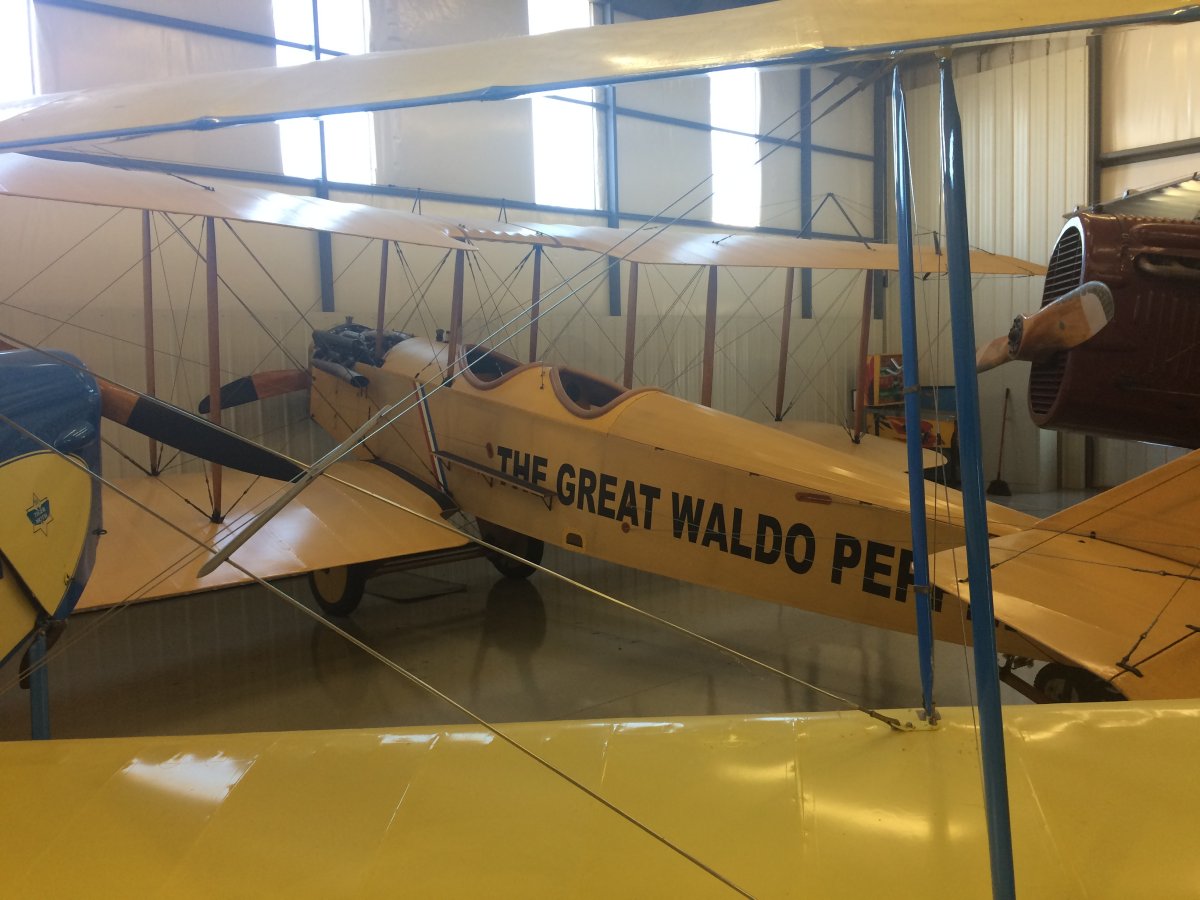 |
|
|
Not something you see everyday. The forward part of an F-4 Phantom fuselage on a trailer!
|
| |
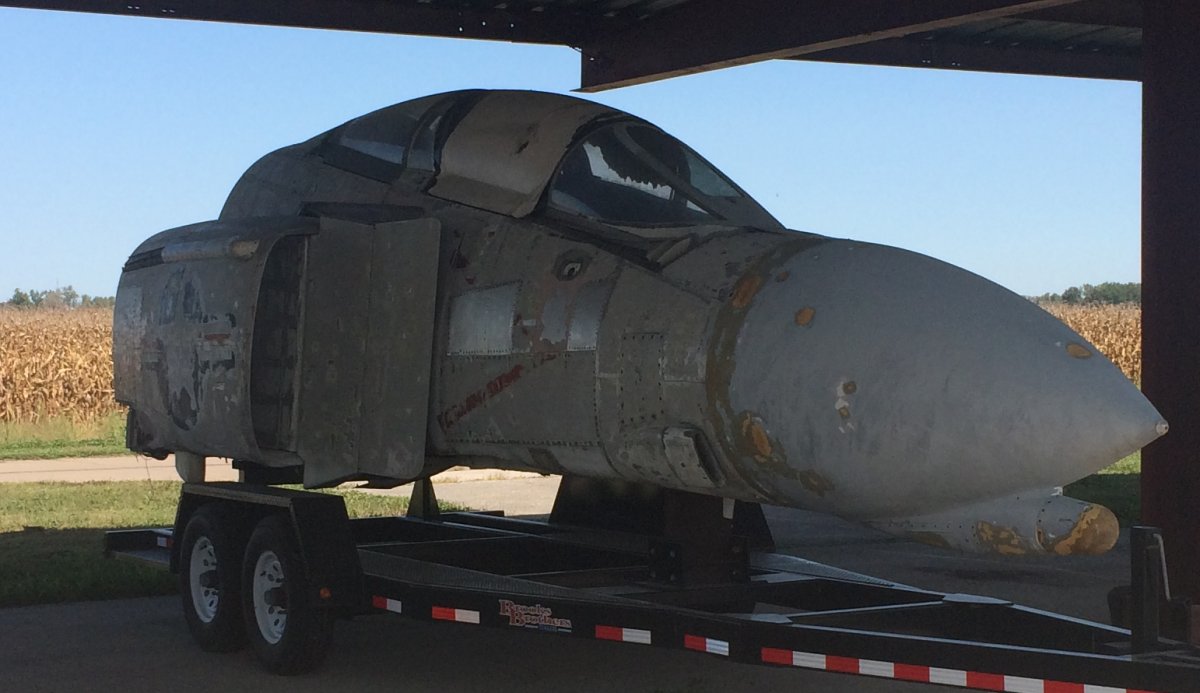 |
|
| I walked down all the hangar rows. Unfortunately, not too many were open to look into. This row has the shorter hangars. |
| |
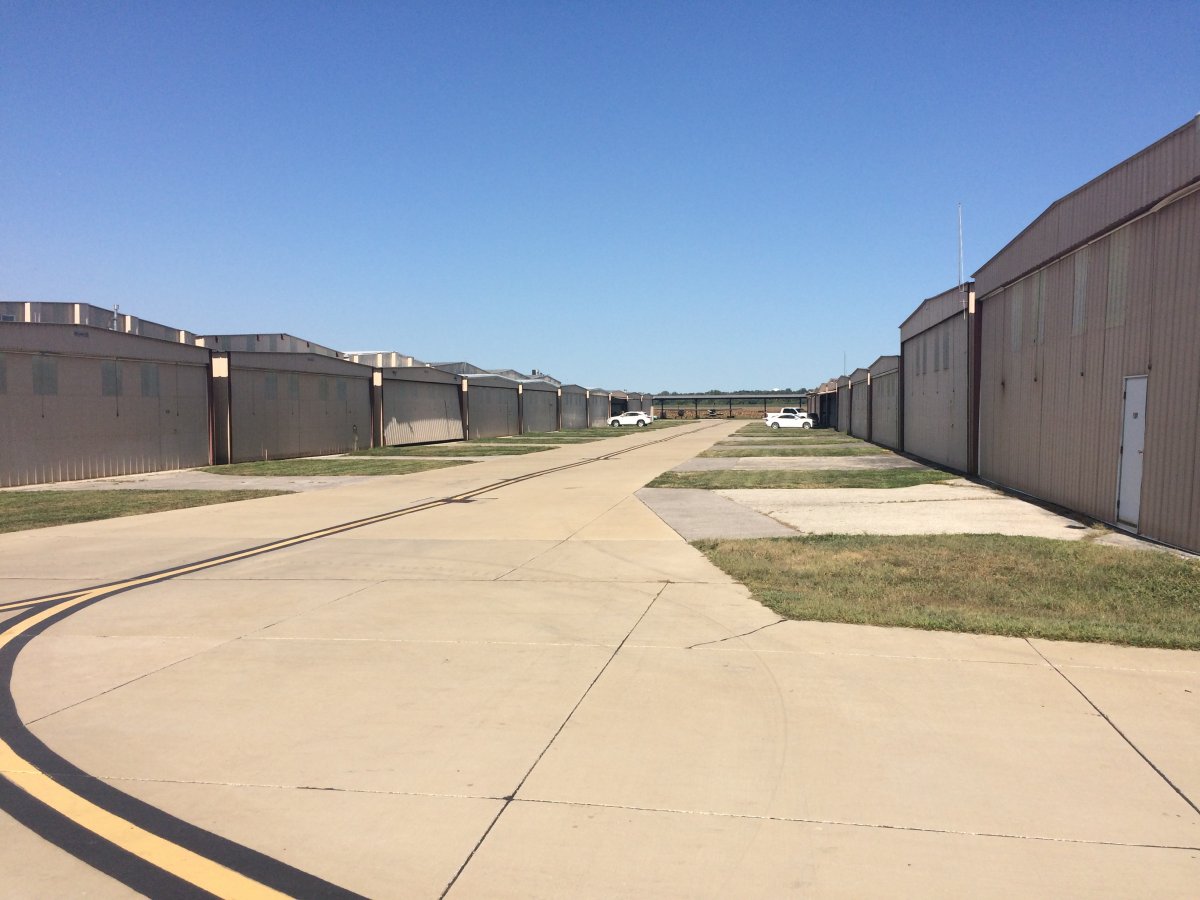 |
|
|
This row has the taller hangars.
|
| |
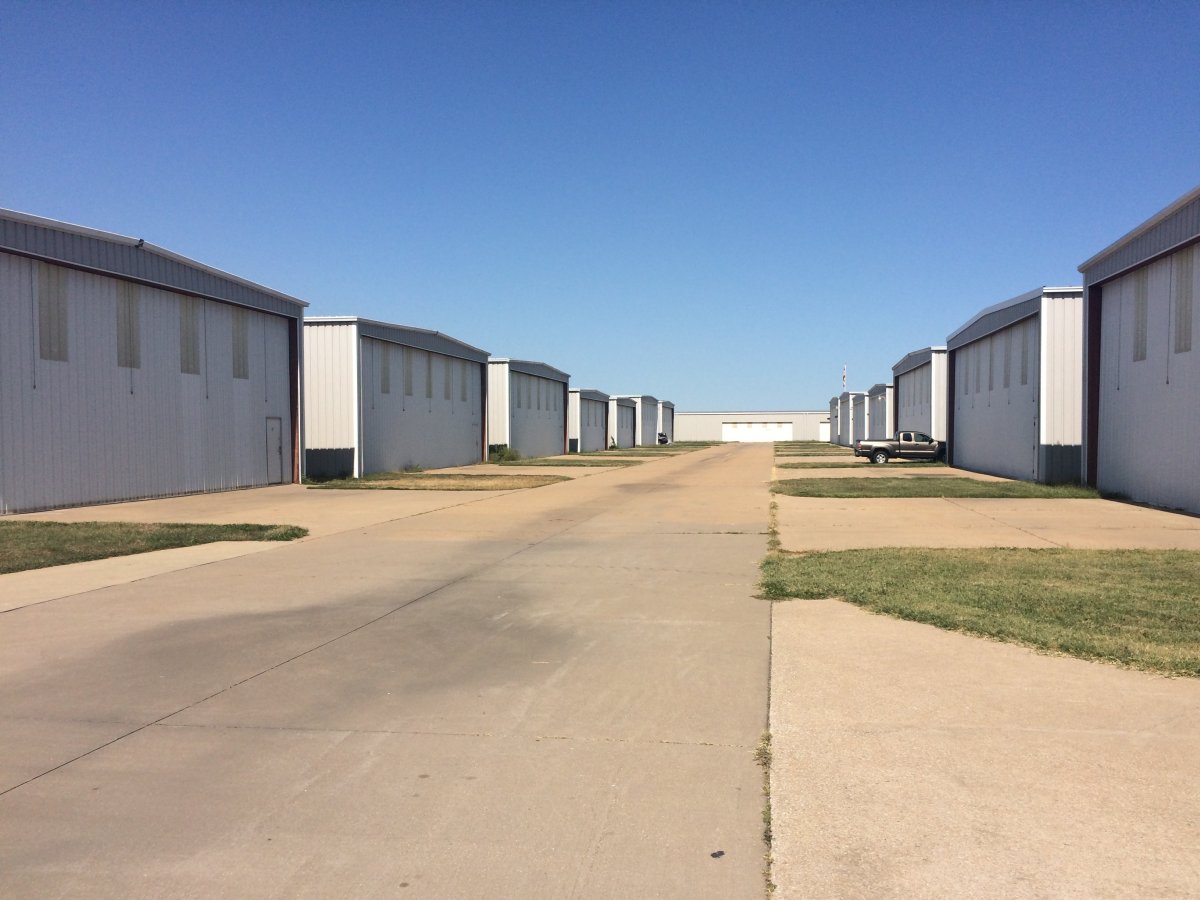 |
|
| Hard to see, but this hangar had four airplanes inside! |
| |
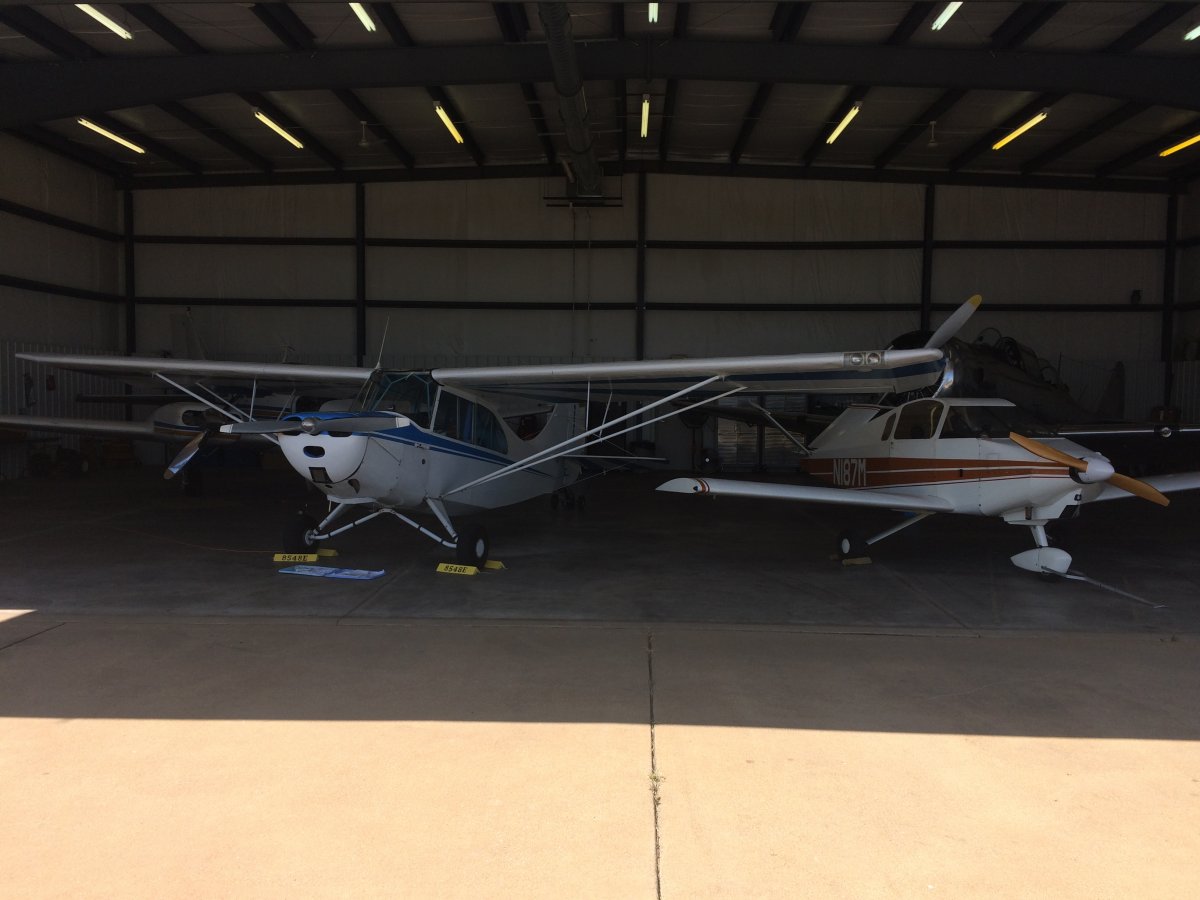 |
|
|
Then there were the open T-hangars.
|
| |
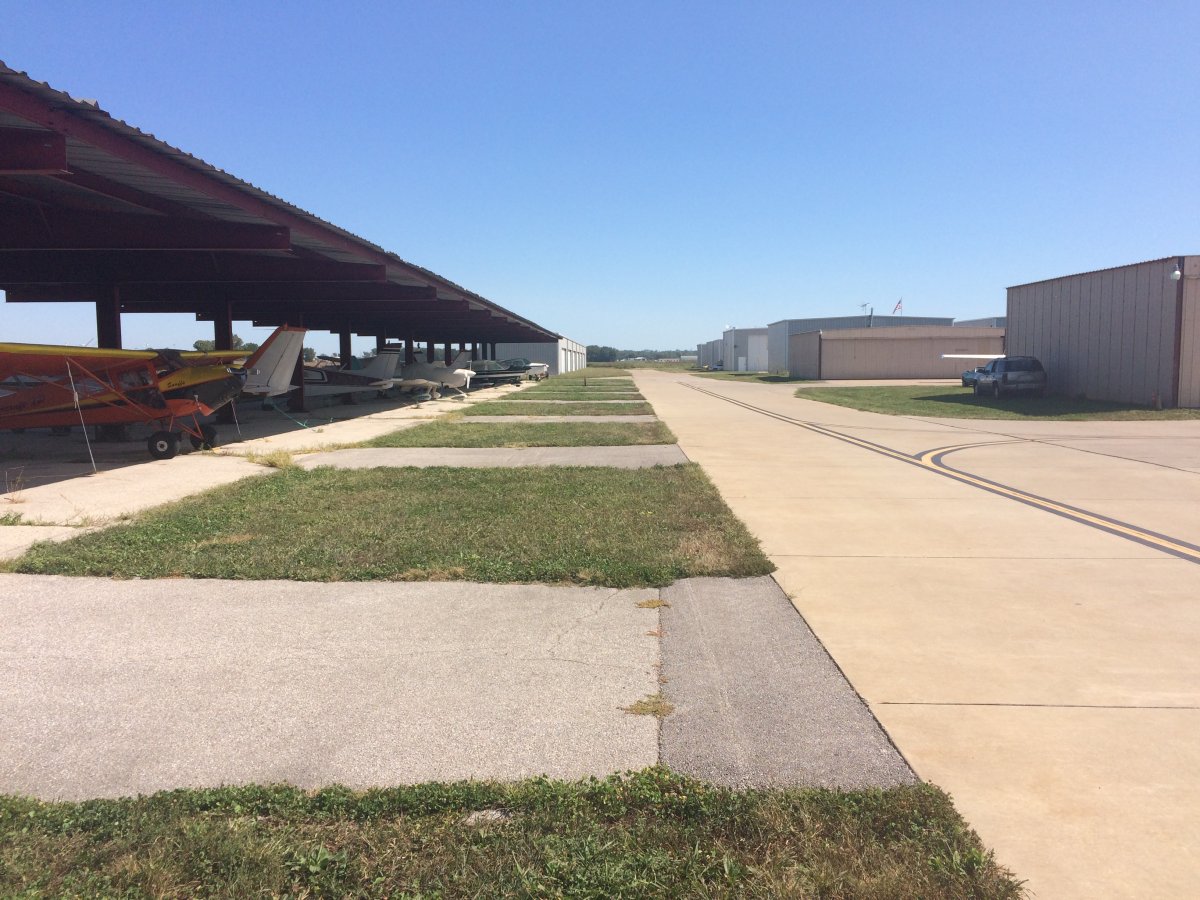 |
|
|
A zebra-like Navy Stearman taxiis out. I would end up taking off after this airplane and passing it in flight.
|
| |
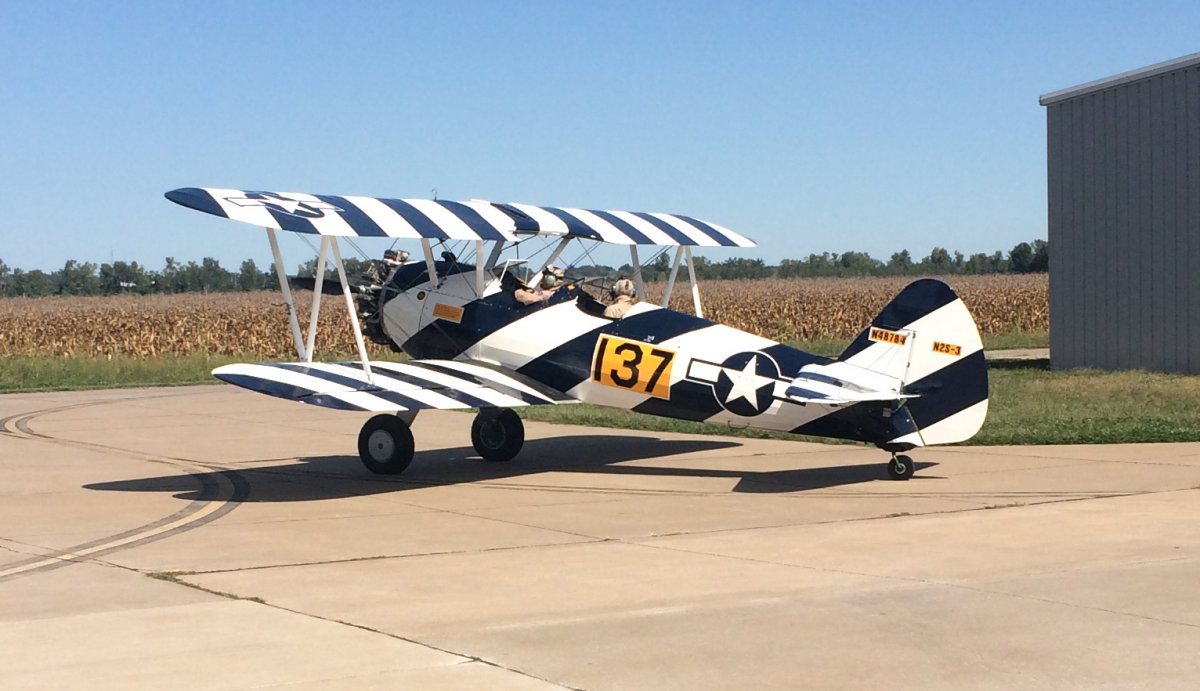 |
|
| |
| |
|
|
|
|
|
|
















































